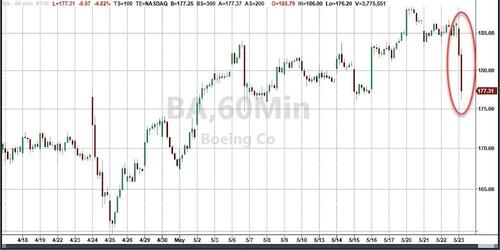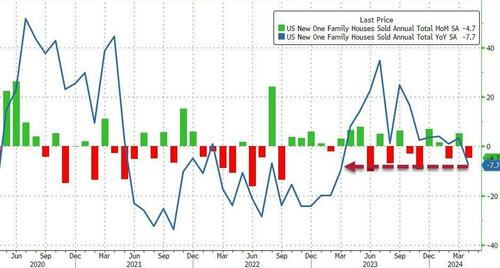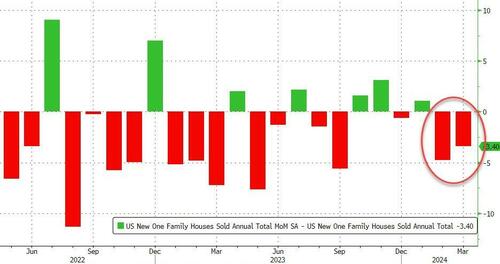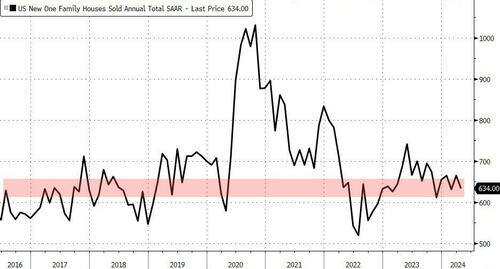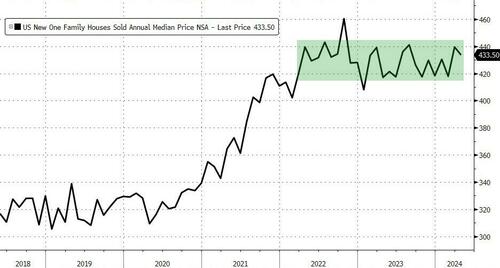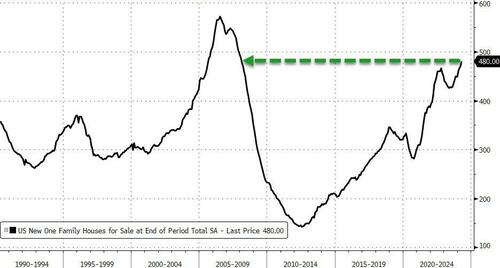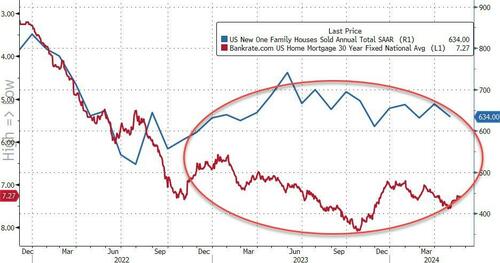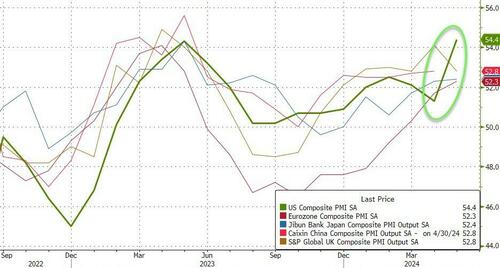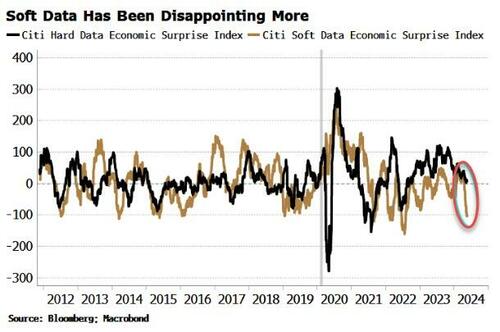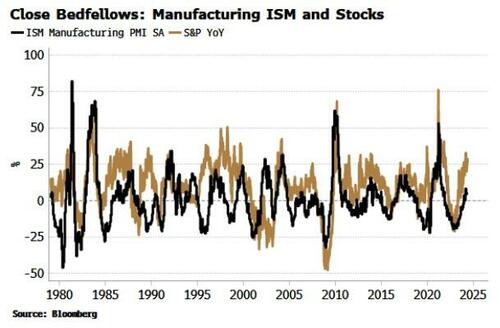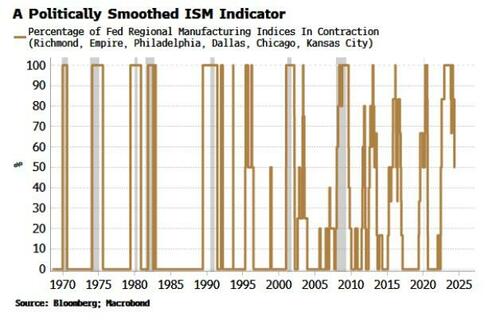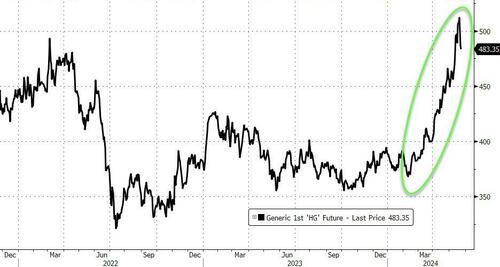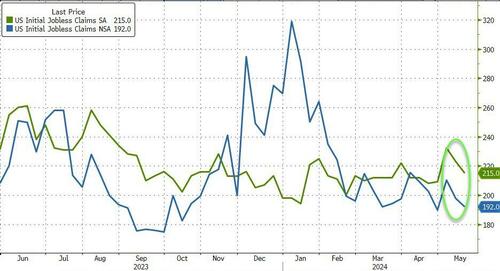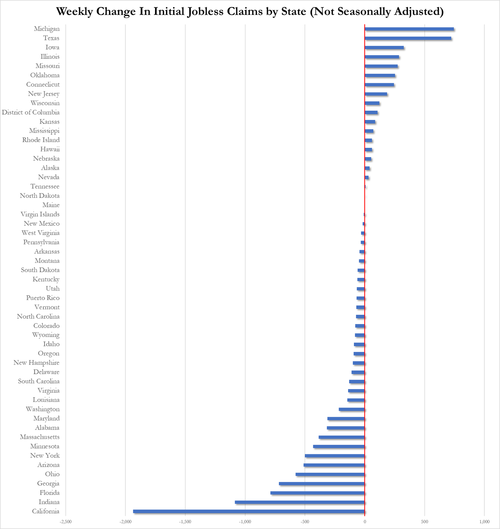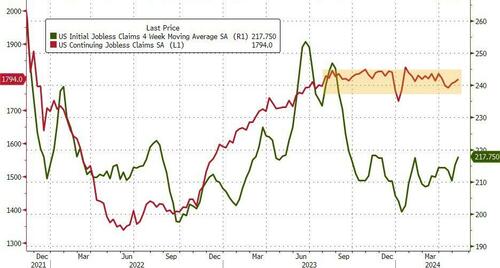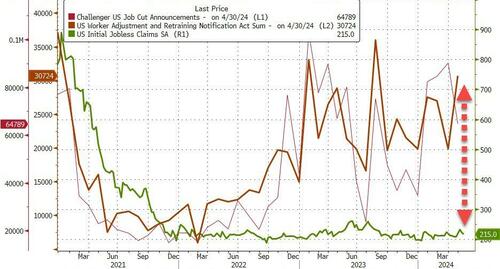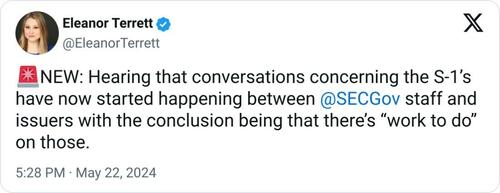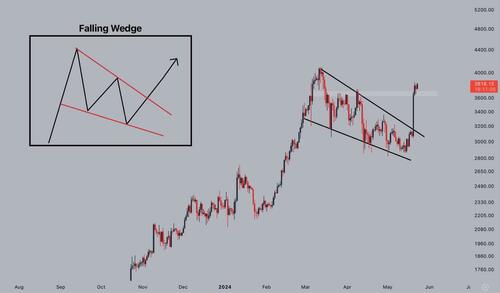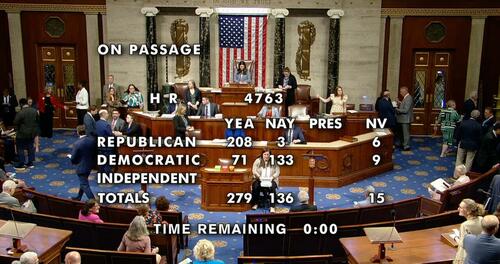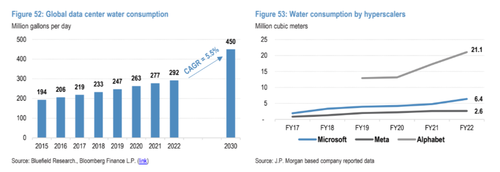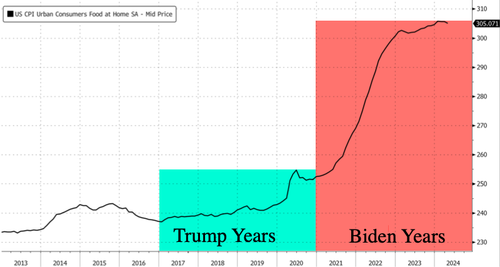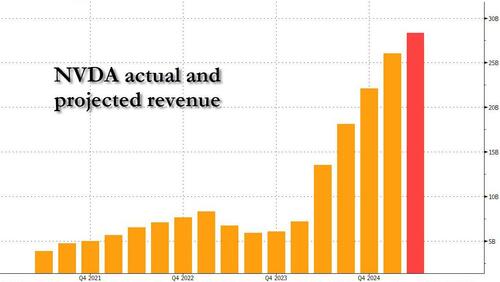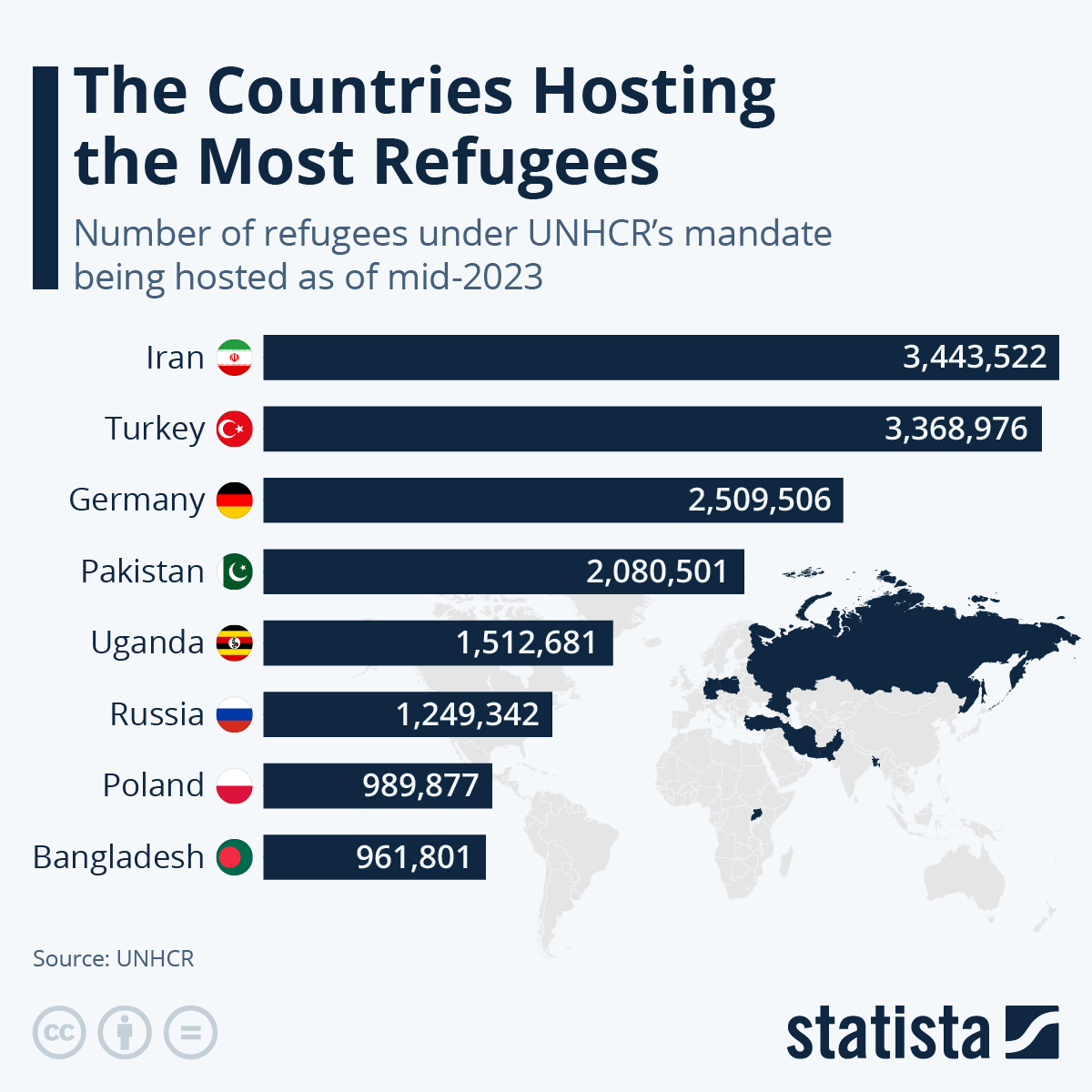It is sad that there are what you might call professional Catholics who make a living on their Catholicism, but in whom the spring of faith flows only faintly, in a few scattered drops. We must really make an effort to change this.
Distinction Matter - Subscribed Feeds
-
Site: The Eponymous Flowerhttps://rumble.com/v4wmql3-mel-k-and-jack-cashill-ashli-the-untold-story-of-the-women-of-january-6th-5.htmlIn the weeks leading up to January 6th, one guy was looking and talking tougher than Ray Epps and that was this blog's number one fan Thug Gordon. We told him to stay home but laugh now that he could've been sharing a cell with Bozell. It looks like he took our advice and even pulled his video.
-
Site: RT - News
Proposals for a peaceful division will be presented in the next 30 days, Milorad Dodik has said
Republika Srpska will outline proposals for a peaceful split from Bosnia and Herzegovina within 30 days, the region’s President Milorad Dodik has said. The country’s current arrangement is dysfunctional, according to the Serb leader.
Bosnia and Herzegovina was divided into the ethnically Serbian Republika Srpska and a federation run by the Bosnian Muslims (Bosniaks) and Croats, under the US-brokered 1995 Dayton Agreement, which ended the civil war in the former Yugoslav republic.
Dodik has repeatedly stated that Bosnia and Herzegovina had always been a foreign project with no chance of success. There are no logical or historical reasons for the country to exist, he has insisted, and “the only rational thing is to divide it.” This would unite all of the Serbs who found themselves living in different countries after the breakup of Yugoslavia.
“In the next 30 days, an agreement on peaceful demarcation will be proposed,” Dodik wrote on X (formerly Twitter) on Thursday, adding: “Today we start with a formal decision to seek a peaceful demarcation.”
The remarks come as the UN General Assembly is expected to vote on a resolution proposed by Germany and Rwanda on Thursday to designate July 11 as the International Day of Remembrance for the 1995 Srebrenica Genocide – a step opposed by Dodik and the Republika Srpska government.
“The Serbian people can no longer live in this Bosnia and Herzegovina. What the Bosniaks did with the resolution on Srebrenica is illegal and they did not respect the Serbs,” he claimed.
Read more Serb leader comments on prospects of ‘sovereign state’
Serb leader comments on prospects of ‘sovereign state’
The resolution avoids attributing collective responsibility, according to the Serb leader, who described it as a deceitful tactic.
A list of those missing or killed following the events of 1995, compiled by the Bosnian Federal Commission for Missing Persons, contains 8,372 names. Republika Srpska accepts that a “terrible war crime” was committed against Muslims in Srebrenica in the summer of 1995, but not a genocide.
Dodik was quoted by media as saying on Thursday that he “sympathizes with all victims” but is against the portrayal of the Srebrenica events as a genocide. He previously said that “the murder of more than 3,000 Bosnian Serbs in Srebrenica still remains unpunished and is not remembered by anyone except the Serbs themselves.”
He has proposed that Republika Srpska should establish its own day to commemorate both Bosniak and Serbian victims of Srebrenica.
-
Site: LES FEMMES - THE TRUTH
-
Site: Zero HedgePolitical Shellshocks Loom For MarketsTyler Durden Thu, 05/23/2024 - 11:40
By Michael Every of Rabobank
Shellshock
Yesterday, the RBNZ held hawkishly and talked about a rate hike, with no cuts seen until end-2025. The UK’s inflation numbers were awful both headline and core, with services CPI at around 6%: yet the BOE evidently wants to cut rates as soon as it can. Then the Fed minutes from its May meeting made clear several FOMC members are still prepared to vote for a hike, or to keep rates on hold longer than markets expect. (See here for more from our Fed Watcher Philip Marey.)
Luckily for markets, however, the AI boom rolls on and on: because where would we be without our US asset bubble du jour?
However, there are still more potential shellshock for markets ahead from politics: Bloomberg’s Shuli Ren asks, ‘Has Xi changed His Mind on Housing and Consumption?’ The NOT neoliberal, but Marx-Lenin-Mao-Xi ideology of China’s political-economy was underlined by its release of an AI based entirely on Xi Jinping Thought, which some dub ‘Chat Xi PT’. However, were Beijing to reflate with serious fiscal stimulus, it would hamper Western central banks’ room for rate cuts: look at what commodity prices are doing without any Chinese version of the West’s Covid stimulus.
A smaller shellshock is the UK holding a rare summer election where polls say it’s “Gone on the 4th of July” for the Conservatives. Indeed, the logic of doing this now rather than waiting for November in the hope opposition support dips has political experts saying either PM Sunak has the inverse Midas touch, or there is a looming scandal so bad it’s prompted the worst-snap election since New Zealand’s drunk Prime Minister called a “Schnapps election” in 1984.
The larger UK shell shock is Shapps: the defence minister states, “Lethal aid is now, or will be, flowing from China to Russia into Ukraine.” Yes, China is helping the Russian economy by supplanting Western-centric industrial supply chains, and some of that has dual use, but actual lethal aid is supposedly a ‘red line’ that triggers US and EU secondary sanctions. Yet in January 2022 I warned these would either prove ineffective or bifurcate the world economy into complying/not complying blocs. Our post-invasion research underlined the same binary, and that it’s impossible to model how much economic damage would be done if secondary sanctions had real teeth. More recently, the IMF made the same point.
Markets may think even if this is correct that, like Shapps, ‘this too will pass’, and we can Keep Calm and Carry On Rate Cuts (and/or AI). Yet that’s the same pre-war naïve thinking I decried in 2022. After all, that would mean there are no red lines, so lethal aid can flow to Russia; its military position vis-à-vis Ukraine would be strengthened further; and it would leave Europe unwilling and unable to respond, and the US unwilling to because it has bigger Chinese fish to fry in Asia. Indeed, things already continue to escalate rapidly:
-
Poland’s Prime Minister Tusk implies Russia may have started a Warsaw department store fire.
-
Russia shifted its maritime boundaries with the EU in the Baltic Sea before deleting the text.
-
Russia is rehearsing tactical nuclear drills near the Ukraine border.
-
The US is reassessing if Ukraine can use US weapons to attack pre-2014 Russian territory.
Meanwhile, Taiwan’s new president Lai Ching-te gave an inaugural address that sailed dangerously close to the China’s red lines. The Global Times rails: “Lai shamelessly stated in his speech that "the Republic of China Taiwan is a sovereign, independent nation" and "the Republic of China and the People's Republic of China are not subordinate to each other," spewing various "Taiwan independence" fallacies and hostile provocations against the Chinese mainland… They are well aware that what they are doing now is pushing Taiwan into a dangerous pit of war and danger." China is already responding with the largest joint military drills around Taiwan for a year, "Joint Sword-2024A", which encircle it, and include actions around its outlying islands of Kinmen, Matsu, Wuxi, and Dongyin. This is as reports say ASML added kill switches to TSMC technology to be triggered if China invades Taiwan.
Moreover, as flagged in Tuesday’s ‘Wrath of Khan’ Daily, the international liberal order is fracturing further following the International Criminal Court’s (ICC) request for arrest warrants for the Israeli prime minister and defence minister, and three leaders of Hamas. The EU is split: Belgium, Spain, and Ireland back the ICC; France did too, then prevaricated; Italy and Austria are opposed, and the Netherlands’ Geert Wilders strongly backs Israel; and Germany said it didn’t agree with the Court… but would only obey its orders. Yet there is bipartisan support in the US, which President Biden won’t block, to sanction the ICC for its recent action. Naturally, Russia and China are making as much hay as they Khan, splitting the Global South further from the West in the process.
But, hey, “AI!”, right?
-
-
Site: AsiaNews.itAsiaNews's editorial director looks at the conferences that marked a hundred years since the Council of Shanghai. While acknowledging past mistakes, he insists that most missionaries were committed to the good of the Chinese people. The nationalism of the European powers of that time cannot be used to hide China's nationalism today. When will a Second Chinese Council, free from political interference, be able to speak about the challenges of evangelisation in this land
-
Site: Zero HedgeBoeing Shares Hit Turbulence After CFO Says Q2 Deliveries Will Be Similar To Q1 Amid Regulatory Limbo In ChinaTyler Durden Thu, 05/23/2024 - 11:21
Boeing CFO Brian West confirmed at an industry conference Thursday morning that plane deliveries to China would be delayed due to Chinese regulatory reviews and stated that there would be no increase in second-quarter commercial jet deliveries compared to the first quarter.
- BOEING DELIVERIES WON'T SEE STEP UP IN 2Q, WILL BE CLOSE TO 1Q
The big problem for Boeing is that not even China wants the jets.
*BOEING CFO SAYS CHINA'S CAAC HAS ASKED FOR MORE CERTIFICATION
— zerohedge (@zerohedge) May 23, 2024
*BOEING CFO SAYS CHINA'S CAAC HAS ASKED FOR MORE CERTIFICATION
Not even China wants flying paperweightsWest said the country's Civil Aviation Administration (CAAC) has requested more certification for 737 Max planes.
- BOEING'S CFO SAYS CHINA'S CAAC HAS ASKED FOR MORE CERTIFICATION
Here are the most critical headlines (courtesy of Bloomberg) breaking on West's comments:
Following the comments, Boeing shares in New York plunged as much as 5.4% - the most in almost four months.
*Developing...
-
Site: LifeNews
Two legal organizations have filed a lawsuit after the National Park Service denied, for the second year in a row, the Knights of Columbus’ request to host a Memorial Day Mass inside a national cemetery.
The Knights have hosted the annual Memorial Day Mass inside Poplar Grove National Cemetery in Petersburg, Virginia since the 1960’s.
On May 21, First Liberty Institute and McGuireWoods LLP filed a motion for a temporary restraining order and preliminary injunction against National Park Service, so that the Knights can continue on with hosting their annual Memorial Day Mass at the Cemetery.
According to First Liberty, the National Park Service denied the Knights a permit to host the Mass because a policy change prohibits “demonstrations,” including religious services, in the cemetery.
On May 13, First Liberty sent a letter to Chief Park Ranger Aaron Scott, urging the National Park Service to rescind the denial of the permit and allow the Knights to continue hosting the Mass at the Cemetery.
The letter noted that the Mass does not meet the definition of a “demonstration” and even if it did, the policy’s application would ultimately be discriminatory and a violation of the First Amendment, especially because the National Park Service was denying a group a permit based on the group’s intention to celebrate a religious event.
“If you persist in denying the permit, our clients intend to take all appropriate steps to protect their rights, including through litigation,” First Liberty wrote.
First Liberty requested a response by May 17 about whether or not the permit would be granted.
According to the lawsuit, Chief Park Ranger Aaron Scott responded to First Liberty on May 16, and included “a letter and permit, doubling down on his position that any non-committal ‘religious service’ is a prohibited ‘demonstration’ that cannot be held in a National Cemetery.”
“While the letter purported to grant the Knights permit, in reality, Ranger Scott issued a different permit—one that was never sought—for the Knights to hold their annual Memorial Day mass outside the cemetery,” the lawsuit reads.
SUPPORT LIFENEWS! To help us fight Joe Biden’s abortion agenda, please help LifeNews.com with a donation!
Acting Regional Solicitor Teresa Garrity also responded to the May 13 letter from First Liberty, backing the National Park Service’s decision to deny the initial permit.
According to the motion filed on May 21, Garrity’s letter argued that:
the Knights’ annual Memorial Day mass is a “religious service” that qualifies as a “demonstration” under NPS regulations and Policy Memorandum 22-01, and that, under Policy Memorandum 22-01, “[d]emonstrations within a national cemetery are prohibited ‘without exception.’”
The Knights filed a complaint in the case on May 19, and on May 21, First Liberty and McGuireWoods LLP filed the motion for the temporary restraining order and preliminary injunction.
“The National Park Service is way out of line,” Roger Byron, senior counsel at First Liberty, stated in a news release about the lawsuit. “This is the kind of unlawful discrimination and censorship RFRA and the First Amendment were enacted to prevent. Hopefully the court will grant the Knights the relief they need to keep this honorable tradition alive.”
LifeNews Note: McKenna Snow writes for CatholicVote, where this column originally appeared.

The post Joe Biden Shuts Down Catholic Mass at National Park appeared first on LifeNews.com.
-
Site: Zero Hedge'Unified Reich' Hoax One Of The Most Blatantly Dishonest Attacks On Trump YetTyler Durden Thu, 05/23/2024 - 11:10
With a brand new set of polls showing Donald Trump leading in six of seven swing states, establishment media has stooped to new levels of transparent dishonesty in a desperate effort to derail his campaign.
The latest example? An all-out hoax that had major outlets telling Americans that Trump shared a video promising that his reelection would lead to the "creation of a unified Reich," in what was supposedly a shocking revelation of his intention to Make Nazism Great Again.
Here's a sampling of the hysterical headlines:
- Newsweek: Donald Trump 'Unified Reich' Video Leaves People Stunned
- MSNBC: Trump's Online Account Promotes 'Unified Reich' Video, Adding To Alarming Pattern
- The Hill: White House Slams ‘Sickening’ Video Shared By Trump Referencing ‘Unified Reich'
- CNN: Trump Posts Video Referencing 'Unified Reich' If Reelected
TV's talking heads gravely shared the news. ABC's George Stephanopoulos said Trump posted a video that "used language from Nazi Germany, the latest in a series of antisemitic and authoritarian statements from Trump and his campaign." Social media erupted in the latest round of bogus outrage, including this pearl-clutching tweet from archetypal deep-stater and Constitution-betraying mass surveillance architect Michael Hayden:
UNIFIED REICH, My God. https://t.co/mfE6L37gJJ
— Gen Michael Hayden (@GenMhayden) May 21, 2024The White House leapt headlong into the propaganda blitz. “It is abhorrent, sickening, and disgraceful for anyone to promote content associated with Germany’s Nazi government under Adolf Hitler,” said Deputy White House Press Secretary Andrew Bates. Piling dishonesty on dishonesty, here's Joe Biden recoiling in phony disbelief as he pretends to be seeing Trump's alleged abomination for the first time:
BOOM! President Biden just responded to Donald Trump calling for a “unified reich” in his campaign ad saying “That’s Hitler’s language, not America’s!” He is absolutely right. Donald Trump is a disgrace to the country. pic.twitter.com/o3zNzhC1VF
— Harry Sisson (@harryjsisson) May 21, 2024So what actually happened? On Monday afternoon, Trump's Truth Social account reposted a video that had been created and posted by someone outside the campaign. The video used imagery of newspaper headlines to imagine a Trump victory in November and the beneficial consequences that would accompany it.
The video was not created from scratch, but rather from a stock video template that anyone can buy online. Sold by Envato Elements, it's called "Newspaper Vintage History Headlines Promo." With its old-newspaper feel, whatever headlines are added to it are given a certain historical gravitas. Aside from the Trump-specific banner headlines, the video creator simply left intact all the minor, historical headlines that come with the template and serve as little more than background filler.
For all the freaking out about Trump using the video to implicitly endorse the Third Reich, the vintage headline in question isn't even about that reich. It reads, "German Industrial Strength After 1871 Driven By The Creation Of A Unified Reich."
"It's difficult to convey just how fake the establishment American media really is," said Newsmax's Rob Schmitt, in this segment that lays bare the utter dishonesty behind the latest baseless outrage:
You've been duped again by the Fake News Media, America.
— Kyle Becker (@kylenabecker) May 22, 2024
Add the "Unified Reich Hoax" to the list.
Newsmax's @SchmittNYC did a great job exposing the hoax. You're going to want to watch this. pic.twitter.com/GDrH2x3mAQPredictably, the so-called "fact checkers" at Snopes framed the video controversy in such a way that they could stamp "TRUE" on it, addressing merely whether Trump shared a video that contained the words "creation of a unified reich." Like many of the harpies on social media who've been called out for their deceptive descriptions of the video, Snopes blames the video creator for "fail[ing] to remove" the unified Reich headline -- as if that video creator had used Triumph Of The Will as their starting template.
Meanwhile, with an article explaining why the video "isn't what people are making it out to be," The Atlantic's David Graham pleasantly surprised us -- only to then exasperate us by reinforcing one of the most persistent anti-Trump hoaxes of all. After explaining the benign nature of the video template, Graham proceeded to administer a Trump-mythology booster to The Atlantic's lefty readership, writing that "[Trump] called neo-Nazi marchers in Charlottesville, Virginia, in 2017 'very fine people.”
 See that blurry little headline on the left? That reference to German industry in 1871 is what this whole thing is about.
See that blurry little headline on the left? That reference to German industry in 1871 is what this whole thing is about.
Let's go to the transcript...again. In a feisty exchange with reporters, Trump -- referring to politically diverse protesters and counter-protesters who showed up in Charlottesville -- said:
"You had some very bad people in that group, but you also had people that were very fine people, on both sides...You had people in that group that were there to protest the taking down of, to them, a very, very important statue and the renaming of a park from Robert E. Lee to another name."
After questioning whether statues of historical figures should be removed solely because the person in question had some involvement with slavery, Trump said:
"You’re changing history. You’re changing culture. And you had people -- and I’m not talking about the neo-Nazis and the white nationalists -- because they should be condemned totally. But you had many people in that group other than neo-Nazis and white nationalists. Okay? And the press has treated them absolutely unfairly."
Just as the "very fine people" hoax persists at The Atlantic and nearly everywhere else, we're guessing the "unified reich video" hoax will have staying power too. In any event, it looks like it's time for Scott Adams to issue another update to his hoax quiz...
I updated the Hoax Quiz.
— Scott Adams (@ScottAdamsSays) March 17, 2024
Hoax Quiz
How many of these hoaxes do you still believe are true?
Russia Collusion Hoax
Steele Dossier hooker story
Russia paying bounties on US soldiers in Afghanistan
Trump called Neo-Nazis “Fine people.”
Trump suggested drinking/injecting bleach… -
Site: Zero HedgeBiden Goes All-In With War On CoalTyler Durden Thu, 05/23/2024 - 10:50
Authored by American Coal Council CEO Emily Arthun, via RealClearEnergy,
The Biden administration’s war on coal came out of the shadows recently, with the release of a new series of regulations that have the clear intent of locking up millions of acres of federal land from coal mining and drilling for oil and natural gas, as well as shutting down the nation’s remaining coal-fired power generation fleet.
The Bureau of Land Management released a new rule that will effectively make it impossible to continue to mine coal or drill for oil and gas anywhere on federally owned lands. This will cripple coal mining in the Powder River Basin and other western reserves, which provide most of the nation’s thermal coal used for energy production. This action alone would have been devastating, but it was just part of a much larger and far-reaching series of regulatory actions.
The new tranche of regulations was an 11th hour assault, issued literally days before the close of a window of time allowing a new President to reverse the decision by executive order. With this announcement, any reversal will have to come through action by both houses of Congress or by litigation in court.
These actions come despite the clear warnings by some of the Biden Administration’s own electric utility regulators that further closures of baseload energy capacity (such as coal) could result in the failure of the nation’s electric grid.
The new regulations effectively make it impossible for utilities to continue to operate coal-fired power plants without investing in new, largely unproven commercially and highly expensive, carbon capture technologies capable of cutting 95% of carbon dioxide emissions. It would also require the same of any new natural gas-powered facilities. However, existing natural gas facilities would be exempt from the requirement.
Make no mistake about it, this new series of regulations has one intent – to force the shutdown of the nation’s coal-fired generation fleet, starving it of much of its fuel source, and making it economically impossible to continue to operate these units. Far from some panacea, these actions will ripple through the entire economy. They will drive already staggering electric bills out of reach for millions of American families, leaving them struggling with the choice of putting food on the table or heating and cooling their homes. Many of those on fixed incomes, such as retirees on social security, will be the hardest hit.
And even if you can afford to pay for electricity, it may not be there when you need it most. Further closure of baseload generation could (and likely will) push the electric grid past the breaking point during the very times when they need electricity the most – the heat of summer and the cold of winter. It will result in the de facto rationing of energy and will also play out across the rest of the economy, driving inflation even higher and forcing many companies out of business.
Frankly, I do not understand this “damn the torpedoes, full steam ahead” approach to regulation. It seems allegiance to a radical green agenda is all that matters to the Biden Administration and the needs of average American families are not even on the radar.
America needs ready access to reliable and affordable energy. It is what built this great nation. There is no shortage of coal. There is no shortage of gas or oil. However, there does appear to be a shortage of common sense on the part of this administration.
Rather than using our vast resources of coal, oil, and gas, the Biden Administration seems intent on committing economic suicide. Over the next few decades, demand for electricity is projected to skyrocket. How will we meet that demand if we continue this administration’s reckless pursuit of a green fairy tale?
Emily Arthun is president and CEO of the Washington, D.C.-based American Coal Council.
-
Site: LifeNews
On Tuesday the organization Planned Parenthood Great Plains Votes issued a statement on X (formerly Twitter) criticizing the Arkansas Legislature for providing $2 million to support pregnancy help organizations and maternal and infant wellness in Arkansas.
In April the Arkansas Legislature passed — and Gov. Sanders signed — S.B. 64 by Sen. John Payton (R – Wilburn). This good budget measure provides $2 million in state grant funding for pregnancy help organizations.
The $2 million will be disbursed as grants to pregnancy resource centers, maternity homes, adoption agencies, and other organizations that provide material support to women with unplanned pregnancies.
This funding helps serve families at the local level without creating new government programs. The State of Arkansas is expected to start accepting grant applications from pregnancy help organizations in the coming months.
Click here to sign up for pro-life news alerts from LifeNews.com
In 2022 and in 2023 Family Council worked with lawmakers and the governor to create this grant program for pregnancy help organizations. Since then more than two dozen good organizations across the state have applied for funding and used it to give women and families real assistance when faced with an unplanned pregnancy.
S.B. 64 makes improvements to the grant program. It increases state funding from $1 million per year to $2 million. This puts Arkansas’ funding on parr with funding in other states.
The law also clarifies that “pregnancy help organizations” include nonprofit organizations that promote infant and maternal wellness and reduce infant and maternal mortality by:
- Providing nutritional information and/or nutritional counseling;
- Providing prenatal vitamins;
- Providing a list of prenatal medical care options;
- Providing social, emotional, and/or material support; or
- Providing referrals for WIC and community-based nutritional services, including but not limited to food banks, food pantries, and food distribution centers.
S.B. 64 also includes language preventing state funds from going to abortionists and their affiliates.
However, Planned Parenthood criticized the funding measure, posting,
There simply shouldn’t be anything controversial about the State of Arkansas awarding taxpayer funds to organizations that provide material support to women and children and that promote maternal wellness.
Fortunately, Arkansas’ lawmakers and governor don’t agree with Planned Parenthood.
Family Council is grateful to the General Assembly for passing S.B. 64, and we appreciate Governor Sanders signing it into law. We look forward to seeing the state implement S.B. 64 in the coming fiscal year.
LifeNews Note: Jerry Cox is the president of the Arkansas Family Council.

The post Planned Parenthood Condemns Arkansas for Helping Pregnant Women appeared first on LifeNews.com.
-
Site: Zero HedgeWatch: Cruz, Kennedy Destroy Biden Judge For Placing '6 Foot 2 Serial Child Rapist' In Women's PrisonTyler Durden Thu, 05/23/2024 - 10:30
Sens. Ted Cruz (R-TX) and John Kennedy (R-LA) eviscerated a Biden judicial nominee on Wednesday over her 2022 recommendation that a transgender serial rapist, William McClain (aka July Justine Shelby) be housed in a women's prison despite previous convictions for raping children and possessing child pornography.
The Senators grilled U.S. Magistrate Judge Sarah Netburn, who was nominated to serve on the U.S. District Court for the Southern District of New York. Netburn transferred McClain despite an objection from the Board of Prisons.
In a handwritten note, McClain (Shelby) said he feared for his health, safety and life and suffered from gender dysphoria (of course a convicted child rapist wouldn't expect to fare well in prison).
"Miss Shelby said I don't want to go to a male prison. I want to go to a female prison," Kennedy told Netburn. "And the Board of Prisons said 'What planet did you parachute in from? You're going to a male prison with this kind of record.' And you sent him to a female prison, did you? You said that the Board of Prisons was trying to violate Ms Shelby, former Mr. McClain's, constitutional right, didn't you?"
Watch (via @Eddies_X)
WTAF!
— Eddie (@Eddies_X) May 23, 2024
Activist Judge Sarah Netburn, a Biden judicial nominee, recommended in 2022 that a man, William McClain, who goes by July Justine Shelby, be housed with female prisoners, despite his previous convictions for r-ping children and possessing child p-rnography‼️
John Kennedy… pic.twitter.com/CWYmrhCRyTKennedy pointed out that Shelby was convicted for molesting a 9-year-old boy and raping a 17-year-old girl, and had sent child porn to other sex offenders.
"I issued a report and recommendation to the district judge recommending that the district judge transfer the petitioner to a women's facility," Netburn replied. "My recommendation was that the petitioner's serious medical needs were being denied by keeping her in a men's facility."
Cruz then began his line of questioning.
"And this individual. Six-foot-two, biologically a man. A minute ago you said that when this man decided that he was a she, that you said this individual was quote, I wrote it down, ‘sober and entirely a female,’" Cruz said.
"Sorry, what I meant to say was hormonally a female," Netburn replied, admitting that McClain had male body parts.
"So you took a six-foot-two serial rapist. Serial child rapist with male genitalia," Cruz continued. "And he said, you know, I'd like to be in a women's prison. And your answer was, ‘That sounds great to me.’ Let me ask you something. The other women in that prison, do they have any rights?
"Do they have the right not to have a six-foot-two man who is a repeat serial rapist put in as their cellmate?" Cruz continued.
Netburn attempted to defend her decision, robotically repeating iterations of "Senator Cruz, I consider the facts presented to me, and I reached a decision."
Cruz shot back - "This is not a judge's order ... This is a political activist, by the way. The beginning of your order, says. At birth. People are typically assigned a gender. I gotta say, that would astonish a lot of Americans. A lot of Americans think you go to the hospital, a baby is born, and you congratulations."
"You have a little boy, a little girl the assigned a gender. I know you went to Brown (University), but it sounds like it's in a college faculty lounge with no bearing on reality, the Bureau of Prison argued," Cruz said. "What I'm saying right now, that if you put this person in a female prison, there will be a risk of sexual assault to the women. And you know what you did? You said you didn't care about the women. I'm going to quote what you wrote. You wrote, quote, the Bureau of Prisons claimed penal logical interest in protecting female prisoners from sexual violence and trauma. This interest is legitimate."
Watch:
Meanwhile, the redpilling of Bill Ackman continues:
This is demented
— Elon Musk (@elonmusk) May 23, 2024 -
Site: LifeNews
Abortion statistics released by the Department of Health and Social Care this morning show the highest number of abortions ever recorded in England and Wales, with 252,122 taking place in 2022, an increase of 37,253 (17.34%) from 2021.
The figures show that:
- In England and Wales, there were a total of 252,122 abortions in 2022, an increase of 37,253 abortions from 2021 when there were 214,869 abortions.
- 251,377 of these abortions were for residents of England and Wales, an increase of 37,121.
- This represents a 17.34% increase in abortions from the previous year.
- The statistics for 2022 also show a rise in repeat abortions from 91,313 in 2021 up to 102,689 in 2022.
- This represents 11,376 more repeat abortions than in 2021.
- This is a 12.46% increase from 2021.
- 72 ‘selective termination’ procedures were performed, where a twin, triplet or more were aborted in the womb.
- There were 3,124 disability-selective abortions in 2022
- There were 256 late-term abortions for babies with disabilities at 24 weeks and over.
- 760 babies with Down’s syndrome were aborted in 2022
- There were 19 late-term abortions for babies with Down’s syndrome at 24 weeks and over.
- There were 46 abortions where the baby had a cleft lip or cleft palate, an increase of 15% from 2021.
- There were also 6 late-term abortions at 24 weeks and over where a baby had cleft lip or cleft palate.
- Sadly, the figures for cleft lip and palate are likely to be higher; for example, a 2013 review by Eurocat showed 157 babies were aborted with cleft lip and palate in England and Wales between 2006 and 2010. However, the Department of Health and Social Care (DHSC) recorded only 14 such abortions.
- The Department of Health and Social Care also reported that the number of abortions funded by the NHS performed by private abortion providers reached a record high of 200,258. This represents a 362.85% increase since 1999 when there were 43,266 abortions performed by private providers.
This significant rise in abortions has accompanied the second full year that at-home abortion services have been operating in England and Wales. Since home abortions were introduced, a number of significant problems have arisen.
Polling shows large majorities of women in the UK support a number of changes to abortion laws that would have a positive impact on lowering the number of abortions. The polling shows that 70% of women want the current time limit on abortion to be lowered and 91% of women want a ban on sex-selective abortion.
Click here to sign up for pro-life news alerts from LifeNews.com
Polling published in the Daily Telegraph earlier this month today shows that 71% of women support the reinstatement of in-person appointments and only 9% are in favour of the status quo. In contrast, only 16% of the public support current proposals to decriminalise abortion.
Spokesperson for Right To Life UK, Catherine Robinson, said:
“It is a national tragedy that 252,122 lives were lost to abortion in England and Wales in 2022”.
“Every one of these abortions represents a failure of our society to protect the lives of babies in the womb and a failure to offer full support to women with unplanned pregnancies”.
“This significant rise in abortions has accompanied the second full year that abortion services outside of a clinical setting have been operating in England and Wales”.
“Only two years ago, the vote to make at-home abortions permanently available passed by just 27 votes. A large number of MPs had serious concerns about the negative impact these schemes would have on women”.
“Since then, we have seen these concerns confirmed, with women such as Carla Foster performing at-home abortions well beyond the 24-week time limit, putting their health at serious risk. If Carla Foster had been given an in-person consultation, where her gestation could have been accurately determined, she would not have been able to access abortion pills and this tragic case would have been prevented”.
“The clear solution here is the urgent reinstatement of in-person appointments. This would prevent women’s lives from being put at risk from self-administered late-term abortions”.
“Polling shows that 71% of women support the reinstatement of in-person appointments and only 9% are in favour of the status quo”.
“Ahead of the General Election, we are calling on the next Government to urgently bring forward new protections for unborn children and increased support for women with unplanned pregnancies. Polling shows these changes are backed by the public and this would ensure we are working together as a society to reduce the tragic number of lives that are lost to abortion each year”.
ENDS
- For additional quotes and media interviews contact 07774 483 658 or email press@righttolife.org.uk
- For further information on Right To Life UK visit www.righttolife.org.uk
- The full 2022 abortion statistics are available here: https://www.gov.uk/government/statistics/announcements/abortion-statistics-for-england-and-wales-2022

The post Record High 252,122 Babies Killed in Abortions in UK appeared first on LifeNews.com.
- In England and Wales, there were a total of 252,122 abortions in 2022, an increase of 37,253 abortions from 2021 when there were 214,869 abortions.
-
Site: Zero HedgeUS New Home Sales Tumbled In April Amid Further Downward Revisions...Tyler Durden Thu, 05/23/2024 - 10:09
After unexpectedly surging in March, new home sales plunged 4.7% MoM in April (considerably worse than the 2.2% MoM decline expected). This dragged new home sales down 7.7% YoY...
Source: Bloomberg
As usual, previous data was revised downwards...
Source: Bloomberg
With revisions, new home sales SAAR fell to 634k - basically unchanged for eight years...
Source: Bloomberg
New home sales median price remains near record highs...
Source: Bloomberg
Interestingly, the supply of new homes has been soaring up towards record highs...
Source: Bloomberg
Mortgage rates above 7% continue to plague existing-home sales, which are “stuck,” National Association of Realtors Chief Economist Lawrence Yun said last week.
Source: Bloomberg
Just how long can homebuilders fill this gap?
-
Site: Steyn OnlineGreetings and welcome to this week's edition of Laura's Links, another busy one for me and another utterly crazy one for the world. I've got to ask: is there anywhere in the world where things are not actually falling apart? Does anyone out there live in
-
Site: Zero HedgeS&P Global Says US Business Activity Is At Its Strongest In Two Years, But...Tyler Durden Thu, 05/23/2024 - 09:56
With both 'hard' and 'soft' data declining rapidly recently, why should we be surprised that S&P Global's preliminary PMI prints for May would suddenly surge, with manufacturing back into expansion?
-
Flash US Services Business Activity Index at 54.8 (April: 51.3). 12-month high.
-
Flash US Manufacturing PMI at 50.9 (April: 50.0). 2-month high.
Just ignore the plunge in hard data in May...
Source: Bloomberg
And just to rub salt into the wounds... S&P Global claims that US business activity accelerated in early May at the fastest pace in two years, largely reflecting stronger growth at service providers and accompanied by a pickup in inflation.
The S&P Global flash May composite purchasing managers index advanced by more than 3 points to 54.4, the highest since April 2022.
BUT...Selling price inflation has meanwhile ticked higher and continues to signal modestly above-target inflation.
“What’s interesting is that the main inflationary impetus is now coming from manufacturing rather than services, meaning rates of inflation for costs and selling prices are now somewhat elevated by pre-pandemic standards in both sectors to suggest that the final mile down to the Fed’s 2% target still seems elusive,” Chris Williamson, chief business economist at S&P Global Market Intelligence, said in a statement.
Factory input prices advanced at the fastest rate since November 2022, the report showed.
Prices-paid and received metrics for service providers also picked up.
Commenting on the data, Chris Williamson, Chief Business Economist at S&P Global Market Intelligence said:
“The US economic upturn has accelerated again after two months of slower growth, with the early PMI data signalling the fastest expansion for just over two years in May.
The data put the US economy back on course for another solid GDP gain in the second quarter. "
As solid as the 1.6% gain in Q1?
“Not only has output risen in response to renewed order book growth, but business confidence has lifted higher to signal brighter prospects for the year ahead.
However, companies remain cautious with respect to the economic outlook amid uncertainty over the future path of inflation and interest rates, and continue to cite worries over geopolitical instabilities and the presidential election."
So while growth macro data is surprising to the downside, this survey says growth is killing it and Bidenomics rules!
Let's see if this "good news" on growth prompts gains (or losses) in stocks.
-
-
Site: Euthanasia Prevention Coalition
The Boundary of incapacity: must not be crossed. (Link to the original release)Montreal, May 23, 2024 – The Bloc Québécois announced today that it will table a Federal Bill that “would allow advance requests for medical assistance in dying (MAiD) for people suffering from neurodegenerative disorders such as Dementia."
This was presented during a Press Conference in Ottawa, in collaboration of a Coalition made up of the Quebec Association for the Right to Die with Dignity (Association Québécoise pour le droit de mourir dans la dignité, AQDMD), the Quebec Bar (Barreau du Québec), the Chambre des notaires du Quebec (CNQ), the College of Physicians of Quebec (CMQ), the Order of Nurses of Quebec (OIIQ), the Order of Pharmacists of Quebec (OPQ) as well as the Order of Social Workers and Marriage and Family Therapists of Quebec (OTSTCFQ) (see their press release in French) + Dying with Dignity Canada.
Given the tone of the Press Conference, which was very critical of the Liberal government, this maneuver has little chance of finding an attentive ear.
A thorough review is required before expanding access to medical assistance in dying by advance request. Crossing the boundary of incapacity and contemporaneous consent to administer MAiD would have serious and unprecedented consequences.
Here is an excerpt from the Brief from Living with Dignity presented last year during the examination (in Quebec) of Bill 11, An Act to amend the Act respecting end-of-life care and other legislative provisions:
The limits of advanced and substituted consent, the numerous practical issues concerning the administration of MAiD, the possible conflicts of interest (numerous cases of abuse and neglect of elderly individuals) and the major impacts of this new access on a network of already fragile geriatric care, strongly questions the merits of this expansion which we also consider to be marked by ableism.It is important to remember that the opponents of this expansion were not invited to testify in a parliamentary committee concerning Bill 11 last year at the National Assembly of Quebec.
Webinar by Professor Theo Boer
To reflect on the issue of advance directives, the citizen network Living with Dignity invites interested people to follow a webinar organized by Doctors Say No International. At 4 p.m. (Montreal time), Friday, May 24, Professor Theo Boer, Professor of Health Ethics (PThUniversiteit Groningen, Netherlands) will present (in English) during this webinar on Assisted dying and its impact on culture: 40 years of Dutch experience with euthanasia.
Zoom link (password: 089934).
Holland is the only country in the world that allows the death of a person by advanced request when they are Incapable of decision-making and conscious (Belgium only allows it when a person is Incapable and unconscious). Professor Boer's contributions in French during the International Meeting on the End-of-Life are now also available in print (in French), as are those of all the speakers at this gathering held in Paris on February 28, 2024.
-30-
Jasmin Lemieux-Lefebvre
Coordinator
Living with Dignity citizen network
info@vivredignite.org
438-931-1233 -
Site: The Orthosphere
“To teach us reverence, and whom we are to revere,
should ever be the chief aim of education.”Thomas Carlyle, “Review of Goethe’s Works” (1832)*
Commenter Ian objects to my irreverent opinions of some heroes of the Old Testament. I understand his unease because I long read the OT with the pious presupposition that these characters were indeed heroes. But then one day my pious presupposition was not working and I just read the words.
What is admirable about Abraham? What kind of man pimps his wife and then plays the jealous husband for cash and prizes? Abraham pulls this stunt twice! What is admirable about Jacob? What kind of man steals his brother’s birthright and goes on to embezzle his father-in-law’s sheep and goats? What is admirable about Joseph? What kind of man exploits his government post and a famine to expropriate and enslave the nation he governs? What is admirable about Rahab the harlot? What kind of a woman helps foreign spies so that she and her family can escape a massacre of her own people?
When a pious presupposition is not whispering Hero! Hero! in your ear, your lying eyes begin to see a shifty rat.
Recall that the soul of a people is revealed in its heroes. Whom they reverence and teach their children to reverence (not always the same person) is supremely important. One way to understand a people is therefore to read their legends and folktales and histories and ask, Who are the heroes? Are they brave warriors? Pious saints? Patient scholars? Or are, as in these cases, shrewd and devious tricksters?
Are they men who outwit unwary yokels with sharp dealings and shrewd fraud?
When I say sharp dealings and shrewd fraud, I do not mean simple intelligence. I believe simple intelligence is in every culture admired. I mean craft; I mean guile; I mean devious design. I mean a man, for instance, who would set another man up to hit on his wife in order to extort cash and prizes.
Imagine that you knew a man in real life who, with his snaky wife, made millions with this loathsome scam. Would you tell your son, “That man is a hero, my son”? Would you say, “Son, I hope you will grow up to be just like him some day”?
All of this makes me wonder what happens to our souls when we read the legends and folktales and histories of a profoundly alien race, and then stifle our natural revulsion with a pious presupposition. “That sure seems rotten, but I guess it must be alright.” What sort of confusion enters into our souls when our hearts recoil from some outrageous roguery, but our heads say, “No, no, this is really a man (or woman) to whom all honor and glory are due?”
Whatever happens, I very much doubt that reading about rascals with a pious presupposition is a hermeneutic conducive to spiritual health.
*) Thomas Carlyle, “Review of Goethe’s Works” The Foreign Quarterly Review 10 (Aug. and Oct. 1832), pp. 1-44, quote p. 8.
-
Site: Zero HedgeRed Or Blue, Rich Or Poor — Recessions Don't CareTyler Durden Thu, 05/23/2024 - 09:25
Authored by Simon White, Bloomberg macro strategist,
Political affiliation and wealth, it’s speculated, are making a recession look more likely than it really is by introducing systematic bias into the economic data. But this is a distraction. For the data that matters most in gauging the likelihood of a downturn, any potential bias matters little. A robust recession framework shows that the near-term risk of a slump remains low, but is prone to shifting higher quickly.
There is no such thing as unbiased data. How the data is procured and presented will always introduce user bias, and it’s no different with economic data. My colleague Simon Flint recently wrote that recession risk is being overstated due to data biases, while Cameron Crise has previously touched upon apparent political bias in survey data.
A reader also wrote in with an interesting conjecture that perhaps soft data is more geared to those who are less well off, and hard data the better off.
The recent worse performance of soft data – helping to inch up recession risks – is thus a reflection of worsening wealth inequality rather than a bona fide worsening in economic conditions.
We’ll get to these points, but first let’s answer what should be the prime question for investors, keen to avoid the worst equity-market drawdowns:
Is bias in the data overestimating recession risk?
The short answer is no.
Although there is some bias in economic data, it’s not enough to subvert recession prediction when done robustly. Near-term recession risk today remains low, but that risk could rise rapidly, independent of data bias.
A prevalent bias in some economic data is political. When it comes to some survey data, it can be significant. The Michigan Consumer Sentiment Survey provides a breakdown of political affiliation. Sentiment is being overwhelmingly driven by those who identify as Democrats, and who are currently wildly more optimistic than Republicans.
I am not aware of an explicit breakdown of affiliation in other survey data, but Cameron notes there is an inferable potential skew in the NFIB’s Small Business Optimism Index toward being higher when a Republican is in the White House. Similarly with the Conference Board’s Consumer Confidence Index.
This is all quite interesting, but the core question for investors remains: does it matter for when stock markets experience their worst falls, i.e. recessions?
To begin with, the Conference Board and Michigan’s gauges of consumer sentiment as well as the NFIB are tier-2 data when it comes to predicting downturns.
Much better is the manufacturing ISM. As a standalone indicator it excels at unequivocally turning down before a recession begins.
But that’s secondary; the ISM’s real importance stems from it sitting at the nexus between soft and hard data and how they interact to trigger recessions.
This is critical. Recessions metastasize when we get a negative feedback loop developing between hard and soft data. Hard data deteriorates, and this feeds into soft and market data. That in turn hits the wealth effect, which affects investment and spending and feeds back into worsening hard data. Unchecked, a recession typically develops.
The ISM’s role is as a key artery from survey data to the market, and thence ultimately into hard data. The other surveys simply don’t have the same influence, with all of them displaying a much weaker relationship with the S&P.
There is some reflexivity in that ISM-survey respondents’ level of optimism will be affected by the level of the market. But the market also responds to the ISM, as one of the first data points out each month.
Despite Cameron’s view that the ISM does not matter as much as it used to, it in fact remains one of the most important data points (I’ll write more on this very soon).
But we also needn’t overstate its importance. There is no single “killer” recession predictor. The ISM’s utility comes from it having a long history, being minimally revised, having an early release time and its role in facilitating recession-causing negative feedback loops. But other data matter too.
All that said, it would be problematic if the ISM displayed any systematic, significant political bias. There is no data on the political leaning of the survey’s respondents, but we can exploit another feature of recessions to get round any potential bias: their pervasiveness.
Things tend to start going bad everywhere at the same time in a recession. Several Fed member banks produce their own regional manufacturing surveys. The states they cover are fairly evenly balanced overall, with two Democrat strongholds, two Republican ones, and two states that are generally closely fought. This should help even out any potential bias.
A reliable and timely recession indicator, with only a few false positives, has been when all of the regional indexes have been in contraction. Even then this should not be used as a standalone signal. To reiterate, we need to see both hard and soft data self-reinforcedly deteriorating at the same time to trigger a recession.
In addition, therefore, we look for a pervasive worsening in hard data too, e.g. the jobs market across states. Unemployment claims in multiple states have picked up sharply ahead of previous recessions.
What about the notion that hard and soft data are biased by wealth inequality, with hard data more geared to the better off, and soft data to the less well off?
Again, there is little bias we can discern. Both better and worse-off households by net worth show a negligible relationship with both hard and survey-based data (even if we use different lags in the data).
Soft, market-based data does have a much stronger relationship with net worth. But, as the table below shows, stocks have a higher, not lower, R^2 with better-off households than less well-off ones. This is anyway as you would expect given the higher exposure of the wealthier to financial assets.
However, the net worth of less wealthy households has a higher R^2 to credit spreads than better-off ones. That may seem odd at first but is likely explained by credit-spreads’ closer relationship to unemployment.
It’s hard to pinpoint any systematic wealth bias in the data, and likewise it’s hard to find political bias in data that matters for recession prediction, or if so any that we can’t smooth out by exploiting state heterogeneity.
So while it’s recommended to “know your data,” when it comes to what matters - avoiding steep market drawdowns ahead of downturns - investors need not get distracted by second-guessing who votes for whom, and how well-off they might be.
-
Site: Ron Paul Institute - Featured Articles
More than 23 years ago, George W. Bush, Jr. signed Presidential Proclamation 7463 declaring that a “national emergency exists by reason of the terrorist attacks at the World Trade Center, New York, New York, and the Pentagon, and the continuing and immediate threat of further attacks on the United States.”
The White House has demonstrated, in several administrations, both Democrat and Republican, “threat inflation” for the sake of spending endless money on wars, and manipulating fears to hold on to power to continue to spend endless money on even more wars in the ultimate protection racket.
As a result, the constitutional system of checks and balances is being obliterated in favor of an Imperial Presidency, and, as the Constitution is eroded, so too, are our liberties.
The recent chipping away at our First Amendment and Fourth Amendment rights can be traced directly to the psychology of a “State of Emergency,” which licenses shredding of freedom.
Presidents no longer ask Congress for explicit permission to go to war, as the Constitution requires, under Article 1, Section 8. Courts have held that once Congress appropriates money for wars, that is tantamount to congressional approval.
The increased spending for war has militarized our culture, proliferates enemies, creates violence at home and abroad.
We must break this cycle of fear, the endless wars and the emergency powers for Presidents who are not accountable to the Congress, which is directly elected by the people.
Those of us who witnessed the events of 9/11, up close, or from a distance, will never forget the imminent danger, the fear, the grief, the loss, the uncertainty that gripped us in those days. Nor will we forget those whose lives were sacrificed, or those who gave their lives in service to humanity on that day, or those who died following long-term illnesses which began during and after the attacks 23 years ago.
That is why it may surprise some that on September 7, 2023, President Joe Biden proclaimed, “I am continuing for 1 year the national emergency previously declared on September 14, 2001, in Proclamation 7463, with respect to the terrorist attacks of September 11, 2001, and the continuing and immediate threat of further attacks on the United States.”
23 years later and trillions upon trillions of dollars spent to “make us safer” and we are still in a “State of Emergency,” facing the same terror threats?
America has been in and continues to be in a State of Emergency which has endowed the Presidency with broad powers and undermined the Constitutional role of Congress, while placing presidential emergency declarations on par with congressional declarations of war, under Article 1, Section 8 of the U.S. Constitution. Presidents from Bush, Jr., to Biden have all capitalized on declarations of a state of emergency.
Congress is a co-equal branch of government. America’s Founders did not design the Congress to be subordinate to the Presidency, but strong presidents and weak Congresses have created that condition.
According to Congressional Research Service (CRS), there are 106 laws which further empower the executive branch following a presidential declaration of a “National Emergency.” The Brennan Center for Justice has identified a total of 136 expanded executive powers.
The emergency powers may not have been used explicitly but their use is authorized once a “National Emergency” is declared. Among the emergency powers of the President, (as cited by CRS) without a need for congressional permission:
- Executive ability to detail members of the armed forces to foreign countries, without congressional approval.
- Undertake military construction.
- Carry out military construction with NATO funds.
- Order “Ready Reserve” to active duty for two years, without their consent.
- Additional penalties for “gathering, transmitting or losing defense information.”
- Lift prohibition on infectious medical waste being dumped in the ocean.
- Seize, shutdown or appropriate broadcast stations.
- Suspend laws concerning production and transportation of chemical, biological and “warfare agents.”
We live in a forever state of emergency, with forever wars, forever fears, forever siphoning off our tax dollars.
Remember:
– The Bush Administration lied when it claimed that Iraq was behind 9/11, but proceeded to characterize Iraqis as terrorists in an attempt to justify killing one million Iraqi citizens.
– Since 9/11, over $8 trillion dollars of our $34 trillion dollar national debt is attributable to wars which never had to be fought, wars which put the lives of America’s brave sons and daughters on the line.
– The United States shelved diplomacy in favor of weaponry as a means of international relations.
– At present the USA spends close to one trillion dollars a year for supporting a war machine and that nearly 60% of all discretionary spending goes for preparation for war.
– The 2002 National Intelligence Estimate, (NIE) which was the (closely held) product of all US intelligence agencies, did not identify Iraq as a major threat, because it was not. The publicly available 2024 Annual Threat Assessment (ATA) of the U.S. Intelligence Community brings forth two paragraphs, out of a 41 page report, regarding “global terrorism.”
There was no discussion in the ATA of the basis for President Biden’s most recent declaration of a national emergency and the “continuing and immediate threats” even though the ATA report was being drafted at about the time that the President continued the “National Emergency” in the name of a 23-year fight against “terrorism.”
The CATO Institute, whose pocket Constitution I carried with me during my years in Congress, suggests amending the National Emergencies Act to rein in Executive power by requiring congressional approval, and putting expiration dates on emergency powers.
Does the US have enemies? Yes. Should we be on our guard? Yes.
“Eternal vigilance is the price of liberty.”
We should also be vigilant against government manipulating our love of country, playing with our fears, in order to control us, or to use us to support the continued erosion of our US Constitution and advance the malevolent ambitions of the military industrial complex, of which President Eisenhower warned in 1961.
Reprinted with permission from The Kucinich Report.
Subscribe and support here.
-
Site: LifeNews
Pope Francis spoke to a palliative care symposium in Canada and told those seeking alternatives to euthanasia and assisted suicide that killing people is a “failure to love.”
The head of the Catholic Church said “authentic palliative care is radically different from euthanasia, which is never a source of hope or genuine concern for the sick and dying.”
“All who experience the uncertainties so often brought about by sickness and death need the witness of hope provided by those who care for them and who remain at their side,” the pope said in his message to the symposium.
“In this regard, palliative care, while seeking to alleviate the burden of pain as much as possible, is above all a concrete sign of closeness and solidarity with our brothers and sisters who are suffering. At the same time, this kind of care can help patients and their loved ones to accept the vulnerability, frailty, and finitude that mark human life in this world.”
SUPPORT LIFENEWS! If you want to help fight abortion, please donate to LifeNews.com!
Catholic News Agency has more:
Quoting his 2020 encyclical Fratelli Tutti, Pope Francis called euthanasia “a failure of love, a reflection of a ‘throwaway culture’ in which ‘persons are no longer seen as a paramount value to be cared for and respected.’”
He also repeated a conviction he has shared before that assisted suicide and euthanasia constitute a “false compassion.”
“‘[C]ompassion,’ a word that means ‘suffering with,’ does not involve the intentional ending of a life but rather the willingness to share the burdens of those facing the end stages of our earthly pilgrimage,” he explained.
“Palliative care, then, is a genuine form of compassion, for it responds to suffering, whether physical, emotional, psychological, or spiritual, by affirming the fundamental and inviolable dignity of every person, especially the dying, and helping them to accept the inevitable moment of passage from this life to eternal life.”
Pope Francis has repeatedly condemned euthanasia, as he did in comments last year.
“You don’t play with life, neither at the beginning nor at the end. It is not played with!” he told reporters aboard the papal airplane heading home from events in France.
“Whether it is the law not to let the child grow in the mother’s womb or the law of euthanasia in disease and old age,” he said, “I am not saying it is a faith thing, but it is a human thing: There is bad compassion.”
Here’s more on the Pope’s comments:
Aboard the plane, Pope Francis was asked by a French journalist whether he had spoken about euthanasia in his private conversation with France’s President Emmanuel Macron earlier in the day.
The French government is currently preparing to pass a controversial bill on end-of-life issues that could legalize assisted suicide and euthanasia in the country. The vote, which was postponed because of the pope’s visit, will be held Sept. 26–28.
Francis said he did not address the topic of euthanasia with Macron on Saturday but that he had expressed himself “clearly” on the issue when the French president visited him at the Vatican last year.
Pope Francis said it is not just an opinion that life should be safeguarded and warned that it is easy to fall into an idea that pain should always be prevented, even through what some might consider a “humanistic euthanasia.”
Instead, science has made great strides in helping people to control pain with medication, he noted, repeating that “you don’t play with life.”
Earlier this year, Pope Francis condemned killing unborn children and the so-called right to abortion.
The Pope tied the two together as joint evils and said ending the lives of babies before birth was a “tragic defeat” for their right to life.
“This is the baneful path taken by those forms of ‘ideological colonization’ that would cancel differences, as in the case of the so-called gender theory, or that would place before the reality of life reductive concepts of freedom, for example by vaunting as progress a senseless ‘right to abortion,’ which is always a tragic defeat,” the Pope said.
He urged European nations to instead focus their laws on the dignity of human beings and their inherent worth and value.
“How much better it would be to build a Europe centered on the human person and on its peoples, with effective policies for natality and the family — policies that are pursued attentively in this country — a Europe whose different nations would form a single family that protects the growth and uniqueness of each of its members,” the Holy Father said.

The post Pope Francis Condemns Euthanasia: Killing People is a “Failure to Love” appeared first on LifeNews.com.
-
Site: Ron Paul Institute - Featured Articles
“Which is better — to be ruled by one tyrant three thousand miles away or by three thousand tyrants one mile away?”
— Rev. Mather Byles (1706-1788)Does it really matter if the instrument curtailing liberty is a monarch or a popularly elected legislature? This conundrum, along with the witty version of it put to a Boston crowd in 1775 by a little-known colonial-era preacher, addresses the age-old question of whether liberty can long survive in a democracy.
Byles was a loyalist, who, along with about one-third of the American adult white male population in 1776, opposed the American Revolution and favored continued governance by Great Britain.
He didn’t fight for the king or agitate against George Washington’s troops; he merely warned of the dangers of too much democracy.
No liberty-minded thinker I know of seriously argues today in favor of a hereditary monarchy, but many of us are fearful of an out-of-control democracy, which is what we have in America today. I say “democracy” because that’s what the government calls itself. Yet the levers of federal government power today are only nominally pulled by elected representatives. The real levers of power are held by the military/industrial/warfare/welfare/surveillance/banking/donor class cartel that has had a stranglehold on the federal government for the past 50 years.
The Senate as originally crafted did not consist of popularly elected senators. Rather, they were appointed by state legislatures to represent the sovereign states as states, not the people in them. Part of James Madison’s genius was the construction of the federal government as a three-sided table. The first side was the people — the House of Representatives. The second side was the sovereign states that created the federal government — the Senate. And the third side was the nation-state — the presidency. The judiciary, whose prominent role today was unthinkable in 1789, was not part of this mix.
In his famous Bank Speech, Madison argued eloquently against legislation chartering a national bank because the authority to create a bank was not only not present in the Constitution but also was retained by the states and reserved to them by the 10th Amendment.
In that speech, he warned that the creeping expansion of the federal government would trample the powers of the states and also the unenumerated rights of the people that the Ninth Amendment — his pride and joy because it protected individual personal natural rights — prohibited the government from denying or disparaging.
He gave that speech in February of 1791, 11 months before the addition of the Bill of Rights — the first 10 amendments — to the Constitution. Given the popular fears of a new central government, Madison assumed that the Bill of Rights would quickly be ratified. He was right.
His Bank Speech remains just as relevant today.
Had Madison been alive during the presidency of the anti-Madisonian Woodrow Wilson — who gave us World War I, the Federal Reserve, the administrative state and the federal income tax — he would have recoiled at a president destroying the three-sided table. Wilson did that by leading the campaign to amend the Constitution so as to provide for the direct taxation of individuals and the direct popular election of senators.
Part of Madison’s genius was to craft restraints on the feds into the Constitution. And some of them — like retaining state sovereignty — created laboratories of liberty. President Ronald Reagan reminded the American public in his first inaugural address that the states formed the federal government, not the other way around. Had I been the scrivener of that speech, I’d have begged him to add: “And the powers that the states gave to the feds, they can take back.”
Reagan also famously said that we could vote with our feet. If you don’t like the over-the-top regulations in Massachusetts, you can move to New Hampshire. If you are fed up with the highest state taxes in the union in New Jersey, you can move to Pennsylvania.
But the more state sovereignty the feds absorb — the more state governance that is federalized — the fewer differences there are among the regulatory and taxing structures of the states. This has happened because Congress has become a general legislature without regard for the constitutional limits imposed on it.
If Congress wants to regulate an area of governance that is clearly beyond its constitutional competence, it bribes the states to do so with borrowed or Federal Reserve-created cash. Thus, it offered hundreds of millions of dollars to the states to lower their speed limits on highways and to lower the acceptable blood alcohol level in peoples’ veins — this would truly have set Madison off — before a presumption of DWI may be argued; all in return for cash to pave state-maintained highways.
The states are partly to blame for this. They take whatever cash Congress offers, and they accept the strings that come with it. And they, too, are tyrants. The states mandated the unconstitutional and crippling lockdowns of 2020-2021, not the feds. The states should be paying the political and financial consequences for their misdeeds, not the feds. They, not the feds, took property and liberty without paying for it as the Constitution requires them to do.
Byles feared a government of 3,000. Today, the feds employ close to 3 million. Thomas Jefferson warned that when the federal treasury becomes a federal trough, and the people recognize it as such, they would only send to Washington politicians — faithless to the Constitution — who promise to bring home the most cash. He also predicted that in the long run, liberty would decrease and government increase. He was correct on both.
Today the government claims it can right any wrong, tax any event, intrude upon any relationship, even suppress any speech that it chooses. That’s because the majority in a democracy that is faithless to constitutional guarantees will take whatever it can get from the minority — including its liberty and property — just to please its benefactors; and to stay in office.
To learn more about Judge Andrew Napolitano, visit https://JudgeNap.com.
COPYRIGHT 2024 ANDREW P. NAPOLITANO
DISTRIBUTED BY CREATORS.COM
-
Site: Zero HedgeGerman Parliament Votes To Decriminalize The Possession Of Child PornographyTyler Durden Thu, 05/23/2024 - 09:05
Are you starting to see a pattern yet?
First there was the introduction of gender fluid and LGBT ideology into public schools, then there were sexualized drag queen performances for children, then leftist activists demanded that pedophiles be referred to as "MAPS" (Minor Attracted Persons) because "they can't help who they are attracted to," then California passed a law reducing charges for adults engaged in sexual relations with minors.
Now, the German Parliament has forwarded a bill that makes possession and distribution of child pornography a misdemeanor instead of a felony, greatly reducing diminishing possible penalties.
German officials claim the new law is meant to address inconsistencies in previous child pornography laws which are sometimes applied to people who "receive images or videos through email or social media without their permission." They also cited instances where two minors traded images and were charged with creation or possession of child pornography.
Critics of the bill argue that the German government could have easily made legal adjustments for those specific exceptions to avoid innocent people being wrongly imprisoned. Instead, they are trying to institute sweeping changes that reclassify the crime and give greater legal protections to an array of child predators. The new law does not make exceptions for adult offenders.
According to the Bundestag (Parliament), the bill stipulates that “possession and acquisition should be punishable with a minimum penalty of three months’ imprisonment, and distribution with a minimum penalty of six months’ imprisonment, and distribution with a minimum penalty of six months’ imprisonment. The offenses regulated in Section 184b of the Criminal Code are therefore classified as misdemeanors and not as crimes.”
It should be noted that the criminal classification for possession of sexual materials related to minors has shifted a number of times in Germany, with felony status applied most recently in 2021. In other words, the German government decided after only three years that punishing pedophiles with longer prison sentences was just not fair.
The move has already been celebrated by a German pro-pedophile activist group known as Krumme-13, or simply K13. the activist group has been described as a “self-help” organization for “pedosexuals.” In a blog post written by its founder and dated May 17, K13 laments that “no politician in all factions apologized to the thousands upon thousands of those affected who fell victim” to the 2021 law which had made possession of child sexual abuse materials a felony."
In 2019 the German Bundestag accepted a petition outlining "children’s rights" which was drafted by Krumme-13. The lobby group advocated for lowering the age of consent to 12 years old and legalizing child pornography. They announced on their website that a resolution developed by the group’s founder, Dieter Gieseking, had achieved enough votes to be added to the constitution, or Basic Law.
Gieseking’s petition amends Article 6 of the Basic Law to add statements regarding children’s rights, and states that “children should be viewed as legal subjects with their own rights.” Article II of the petition includes the "right to sexual self determination." In other words, the group petitioned the German government to give children legal adult status (making them fair game for pedophiles), and the government seems to be taking them seriously.
Beyond the natural inclination of all moral people to be inherently disgusted by those who fetishize children, beyond the fact that pedophiles have long been seen as dangerous and malicious parasites that need to be removed from society, the root legal argument is one of consent. It is an argument which leftist activist groups and political parties continue to ignore.
Children cannot consent. They are not mentally and emotionally mature enough to be capable of informed consent, which means they can be easily targeted for exploitation if they are not protected by the law and by their parents.
The fact that this is a debate we are having in 2024 is mind boggling until you recognize what kinds of people we have lurking in the halls of power. It's not hard to see the tip-toe that is happening today, with the eventual end game being the total legalization of child sex abuse in the name of "inclusion."
-
Site: Mises Institute
-
Site: Zero HedgeThe Copper Bull: Speculation Vs. FundamentalsTyler Durden Thu, 05/23/2024 - 08:45
Copper has gone mad: Liquidated shorts from a flood of speculators, an AI bubble, a supply crisis, and a renewable energy craze have all combined with high global inflation to recently send it to historic all-time highs. While I believe there will be major corrections as some of these factors come back down to earth, the most important one — out-of-control inflation — will ultimately send copper even higher in the longer-term.
Yes, the market has taken on more froth than a Starbucks drink. Copper went high enough to wreck a batch of short sellers who betted that the party was over. The resulting short squeeze forced them to pony up, buying more paper copper to cover their positions and pushing prices even higher. Expect more volatility in the near-term, as the crowd of speculators looking to snatch short-term profits from copper are still here and will keep riding the wave.
Copper Futures (USD/lb) 6-Month
Source: Bloomberg
That’s because the bullish action has been too juicy to resist, and it has enough fundamentals to support more upward action in the medium and longer-term.
High inflation and a supply shortage are conspiring with increased demand for electric vehicles, a boom in renewable energy tech, and an AI bubble to keep the price going up even without the flood of speculative money.
I suspect a cooldown in a few factors driving the copper frenzy: first, I expect the AI market coming come back down to earth. In the longer-term, I also expect practical revisions of renewable energy targets like the impossible “Net Zero,” which are more about making politicians look good in the short-term than being pragmatic and achievable long-term goals. But the demand will still be there, and the current supply squeeze and inflationary pressures are here to stay.
If you’re a buyer, waves of speculation along the way can provide buying opportunities for physical copper in the form of epic volatility and dramatic dips.
While the current narrative is that inflation is easing, any apparent relief from higher prices will be temporary. To avoid a banking and commercial real estate crisis, the Fed will have no choice but to cut interest rates at some point. This will invite a new torrent of inflationary expansion as the Fed ignores the pressure cooker that its policies helped create.
You can’t undo the effects of trillions’ worth of COVID money printing in just a few years or by briefly hiking interest rates to 4% or 5%. Taming that beast would require interest rates to be much higher than the Fed would ever raise them, as it knows that loan-dependent industries like real estate can’t survive with rates upwards of 8, 9, even 10%. The problem is worsened by sustained out-of-control budget deficits that are causing a confidence collapse in US Treasury bonds — in the “full faith and credit” of the US government.
When the Fed finally cuts rates, Americans spending devalued dollars will get slammed with higher prices for gas and food, along with surging commodities like copper and precious metals. Lower rates will also incentivize borrowing over saving for an already over-indebted population. It will encourage Americans to get in even more over their heads with loans they shouldn’t get to finance expenses they can’t afford, adding more upward price pressure for the goods they already don’t have enough money to buy.
It’s enough to make your head spin, and it can only possibly result in higher prices in the coming years — including for copper — even if the AI and renewables projections end up being only half what is currently predicted. That said, the broader renewable energy and AI trends are here to stay, and LLMs like ChatGPT require a lot more power than the internet’s current run-of-the-mill web searches:
A ChatGPT search requires 10x as much power as a traditional Google search pic.twitter.com/khdSbvxsOH
— zerohedge (@zerohedge) May 19, 2024Copper supply woes will also continue throughout this year — and if you zoom out even more, interest rate cuts will all but guarantee higher prices even as shorter-term, speculation-fueled spikes and drawdowns cause the market to overheat.
-
Site: Zero HedgeUS Initial Jobless Claims Refuse To Budge From Near Record LowsTyler Durden Thu, 05/23/2024 - 08:38
According to the magical data providers at the US Department of Labor, just 215,000 Americans filed for jobless benefits for the first time last week (down from the prior week's 223,000).
Source: Bloomberg
Of course, back in the real world, this is what we have seen this year...
1. Everybuddy: 100% of workforce
2. Wisense: 100% of workforce
3. CodeSee: 100% of workforce
4. Twig: 100% of workforce
5. Twitch: 35% of workforce
6. Roomba: 31% of workforce
7. Bumble: 30% of workforce
8. Farfetch: 25% of workforce
9. Away: 25% of workforce
10. Hasbro: 20% of workforce
11. LA Times: 20% of workforce
12. Wint Wealth: 20% of workforce
13. Finder: 17% of workforce
14. Spotify: 17% of workforce
15. Buzzfeed: 16% of workforce
16. Levi's: 15% of workforce
17. Xerox: 15% of workforce
18. Qualtrics: 14% of workforce
19. Wayfair: 13% of workforce
20. Duolingo: 10% of workforce
21. Rivian: 10% of workforce
22. Washington Post: 10% of workforce
23. Snap: 10% of workforce
24. eBay: 9% of workforce
25. Sony Interactive: 8% of workforce
26. Expedia: 8% of workforce
27. Business Insider: 8% of workforce
28. Instacart: 7% of workforce
29. Paypal: 7% of workforce
30. Okta: 7% of workforce
31. Charles Schwab: 6% of workforce
32. Docusign: 6% of workforce
33. Riskified: 6% of workforce
34. EA: 5% of workforce
35. Motional: 5% of workforce
36. Mozilla: 5% of workforce
37. Vacasa: 5% of workforce
38. CISCO: 5% of workforce
39. UPS: 2% of workforce
40. Nike: 2% of workforce
41. Blackrock: 3% of workforce
42. Paramount: 3% of workforce
43. Citigroup: 20,000 employees
44. ThyssenKrupp: 5,000 employees
45. Best Buy: 3,500 employees
46. Barry Callebaut: 2,500 employees
47. Outback Steakhouse: 1,000
48. Northrop Grumman: 1,000 employees
49. Pixar: 1,300 employees
50. Perrigo: 500 employees
51. Tesla: 10% of workforceCalifornia and Indiana saw the largest drop in claims while Michigan and Texas saw the largest rise...
Continuing claims remain glued just below 1.8mm Americans...
Source: Bloomberg
While WARNs and job cut announcements (not provided by the government) are notably elevated...
Source: Bloomberg
Ah, Bidenomics!!
If Trump wins in November, will all this data suddenly be fully released to reflect reality?
-
Site: Zero HedgeSEC Ethereum ETF Discussions Underway, S-1 Approval Expected Within HoursTyler Durden Thu, 05/23/2024 - 08:15
Authored by Josh O'Sullivan via CoinTelegraph.com,
The U.S. Securities and Exchange Commission (SEC) began discussions with potential issuers of Ether exchange-traded funds (ETFs) on May 22, leading some to anticipate an imminent approval.
Journalist Eleanor Terrett noted that discussions between SEC staff and Ether ETF issuers about the S-1 forms concluded with the understanding that there was still “work to do.”
Source: Eleanor Terrett
S-1 forms are registration statements that companies have to file with the SEC, including detailed information about the company and the securities they intend to offer/issue.
Whereas 19b-4 forms are regulatory filings issued to the SEC for approval, used by self-regulatory organizations (SROs) like stock exchanges or trading platforms to propose new rules or change existing ones.
In a subsequent post, Terrett deferred to “the ETF experts” in a separate post.
Assuming that the SEC approves the 19b-4 forms on May 23, Terrett speculated that the SEC might work with Ether ETF issuers “on S-1’s over the next few weeks/months.”
Eric Balchunas, a Senior ETF Analyst at Bloomberg, expects the SEC to issue an announcement on May 23, around the same time they did for the spot Bitcoin ETF.
“My best guess is we hear from the SEC around 4pm tomorrow. For spot btc they dropped it at 3:45pm, some others in past were slightly after 4pm. Anything poss tho.”This development follows the approval of the FIT21 crypto bill in the U.S. House of Representatives, which passed on May 22 with 208 Republicans and 71 Democrats in favor to 136 against.
Consensys CEO Joseph Lubin recently weighed in on the discussion in anticipation of the potential looming Ether ETF approvals.
Speaking exclusively to Cointelegraph at DappCon in Berlin, Lubin stated that Ether ETFs in the U.S. were “as good as done.”
According to Lubin, the 19b-4 applications filed by high-profile firms like BlackRock would be approved, but the process behind the S-1s “could drag on for a while.”
The Ethereum co-founder explained that pressure toward adopting a neutral stance is being applied to the SEC as we approach the upcoming U.S. presidential elections.
Hey @GaryGensler what time are you getting hacked today?
— zerohedge (@zerohedge) May 21, 2024Considering where Ether price action might head in the event of an approval, trading firm QCP Capital put the upside potential at 60%.
“We think an approval is now highly likely with trading expected as early as next week,” it wrote in part of its latest update to Telegram channel subscribers.
The target of 60% higher than current spot price — approximately $6,000 — was based on Bitcoin’s performance in the months after its own U.S. spot ETF go-ahead in January.
Popular trader Jelle, meanwhile, was one of many assuming that the stars would align for Ether bulls on the day.
"ETF decision this afternoon, but the chart looks like it knows the outcome. Higher," he wrote in part of an X post on the topic.
-
Site: Novus Motus LiturgicusThe epic romance that was the life of John of the Cross began before he was born. His father, Gonzalo de Yepes, married for love, choosing a poor maiden named Catalina Álvarez over the good favor of his wealthy, merchant-class family. Their union was blessed with three children, among whom was Juan de Yepes, but Gonzalo’s ultimate reward for following his heart was poverty and death; his parents Robert Keimhttp://www.blogger.com/profile/02834375772428838593noreply@blogger.com0
-
Site: Zero HedgeS&P To Open At All-Time High After Blowout Nvidia Earnings Spike Global MarketsTyler Durden Thu, 05/23/2024 - 07:59
Global markets rallied and US equity futures are sharply higher, poised to push the S&P to a new all time high, after blowout earnings from Nvidia reassured investors that the global artificial-intelligence juggernaut will keep powering equity markets. As of 7:30am, S&P futures were 0.6% higher and Nasdaq futs gained 1.0% entirely on the back of Nvidia's stunning results which saw the company not only hike its Q2 revenue guidance to a consensus-busting $28BN but also announced a 10:1 forward stock split. Elsewhere, the Bloomberg’s dollar index retreated after touching a one-week high while US Treasuries inched higher after losses on Wednesday; European bond markets showed little reaction to the latest PMI report that revealed private-sector business activity at its highest in a year in the euro area, suggesting an economic rebound is taking hold. Oil was flat; bitcoin traded around $70k while Ethereum looked poised to break above $4,000 on today's SEC approval of an ETH ETF. It's a busy day on the macro front with data from the Chicago Fed, jobless claims, Mfg and Service PMIs and New Home Sales on deck.
In premarket trading, it was all tech and all thanks to Nvidia, whose shares rose 7% adding nearly $200 billion to its market cap and poised to add to its 90%-plus year-to-date rally after it reported first-quarter results that beat expectations and gave an outlook that was seen as strong. The company also announced a stock split and increased its dividend. The optimism also lifted peers such as Super Micro Computer and AMD (AMD +2.7%, Dell +5.7%, Super Micro Computer +4.4%, Intel +0.5%). Here are the other notable premarket movers
- DuPont shares climb 5% after the chemical company announced plans to split into three publicly traded companies. Morgan Stanley said this was a “logical decision,” while Ke
- Elf Beauty shares advance 0.6% after the cosmetics company reported fourth-quarter adjusted earnings per share and net sales that came ahead of consensus estimates. Although the company also issued annual projections for sales and profit that didn’t meet expectations, analysts are generally positive on the print.
- Greenwave shares soar 28% after the metal recycling facilities operator announced that it had eliminated all convertible debt.
- Hasbro shares rise 3.4% after an upgrade to overweight at JPMorgan,
- Live Nation shares slide 8.3% after Bloomberg reported that the US Justice Department and a group of states will sue the entertainment company for antitrust violations related to Ticketmaster’s unrivaled control of concert ticket sales, according to people familiar with the case.
- LiveRamp shares rise 14% after the marketing technology company forecast first-quarter an
- Snowflake (SNOW US) shares rise 3.7% after the software company reported first-quarter results that beat expectations and raised its full-year forecast for product revenue. Analysts flagged its margin forecast as a potential concern.
- Under Armour (UAA US) shares drop 1.3% after Oppenheimer downgrades the sportswear company to market perform to await clearer signs of improvements.
- VF Corp. (VFC US) shares plummet 15% after the owner of the Vans and North Face brands reported a loss and a seventh consecutive quarter of falling sales.
- Zuora (ZUO US) shares gain 6.5% after the cloud-based software developer boosted its adjusted earnings per share guidance for the full year; the guidance beat the average analyst estimate.
“This is another important milestone in the AI journey,” said Guy Miller, chief market strategist at Zurich Insurance Company. “Top-performing companies have to deliver and Nvidia has delivered.” The earnings offer clear evidence of the growing importance of AI, and “that’s going to keeping this juggernaut going,” Miller said.
The Nvidia result overshadowed Wednesday’s release of somewhat hawkish Federal Reserve minutes, which showed officials are in no rush to cut interest rates.
European stocks also rose but losses in utilities, real estate and telecommunication names have capped gains. The Estoxx 50 gains 0.5% in early London session with info tech names leading the move higher as NVDA boosted the region’s semiconductor sector. Meanwhile, UK utilities and homebuilders fall after Prime Minister Rishi Sunak unexpectedly announced the general election for July 4 rather than in the autumn. The tech sector leads gains, while utilities post largest declines. Here are some of the biggest European movers Thursday:
- Wizz Air rises as much as 6.8% after issuing income guidance for fiscal year 2025 ahead of expectations, and noted that summer demand is tracking well
- CTS Eventim advance as much as 8.8% after the events ticketing firm reported 12% revenue growth, boosted by an increase of tickets sold online
- Allegro rises as much as 4.8% as 1Q earnings beat showed higher profitability in Poland and reduced losses in international markets
- Mips surges 11% after an ABG Sundal Collier upgrade to buy from hold, saying it looks set for a strong growth acceleration in the second half of 2024
- Tate & Lyle gains as much as 5.8% after announcing its full-year results and the sale of its remaining stake in the Primient joint venture
- Hargreaves Lansdown gains as much as 18% after rebuffing a £4.7 billion takeover proposal. The stock rose above bid value, though Citi says the price is already “rich”
- Embracer falls as much as 11% after reporting weak cash delivery in 4Q. The group also announced that Johan Ekström will step down from his roles as CFO and deputy CEO
- National Grid falls as much as 9.5% after the UK utility said it plans to raise £6.8 billion to fund its £60 billion network spending plan over the next five years
- Orlen drops as much as 7.4% as 1Q earnings missed expectations and amid uncertainty over the new management’s strategy
- Dometic falls as much as 7% after Nordea double-downgrades to sell from buy, giving the RV and outdoor equipment maker its only negative analyst rating
- Julius Baer falls as much as 3.2% after reporting net new money of only CHF 1b, which is weak and well below consensus, according to Vontobel
Elsewhere, M&A news continues to flow in, with Hargreaves Lansdown the latest UK firm to receive a takeover bid. Shares in the investment platform soared after it rebuffed a $6 billion private equity offer. Anglo American shares inched higher as BHP Group was seen moving a step closer to a $49 billion takeover of its smaller rival. Millicom International Cellular SA’s Stockholm-listed depositary receipts jumped as France’s Atlas Investissement confirmed it’s exploring an all-cash tender offer for the firm.
Earlier, Asian equities were mixed as a selloff in Chinese and Hong Kong shares offset gains in regional semiconductor stocks following Nvidia’s latest bullish sales forecast. The MSCI Asia Pacific Index was little changed as of 5 p.m. Hong Kong time. Chinese tech shares bucked the broader rally in the sector amid concerns about an intensifying price war in the local AI market. Alibaba and Tencent were among the biggest drags on the regional benchmark. Alibaba is considering selling convertible bonds, to raise about $5 billion, that can be converted into US-listed stock. BHP was another big contributor to the declines as Asian mining stocks fell after copper and gold prices retreated. The Hang Seng China Enterprises Index slid 1.7% to lead regional losses on Thursday. Traders attributed the broad declines in indexes in China and Hong Kong to profit-taking amid a lack of fresh catalysts after a months-long rally. Benchmarks in Japan and Taiwan advanced, while South Korea’s Kospi fluctuated after central bank Governor Rhee Chang Yong said the potential for an interest-rate hike was limited.
In FX, The Bloomberg Dollar Spot Index drops 0.1% paring Wednesday’s 0.3% rise, its best gain this month. The gauge climbed the previous three sessions amid Fedspeak that showed officials want more evidence inflation is moving lower before considering a rate cut
- EUR/USD rises 0.2% to 1.0842, snapping a three-day decline; it fell to a day-low of 1.0812 following mixed PMI data out of France yet recovered as the German release beat analyst expectations
- GBP/USD up 0.2% to 1.2738 as UK composite PMI came softer than expected; pound and gilts largely looked past an earlier-than-expected UK election campaign, with analysts and investors citing the similar economic policies of the two main parties among reasons for its lack of impact on markets
In rates, treasuries were little changed on the day, with yields trading within one basis point of Wednesday’s session close following a rangebound overnight. US 10-year yields around 4.42%, close to Wednesday session close with bunds trading cheaper by 1.5bp in the sector and gilts trading richer by 1bp. European bond markets showed little reaction to purchasing managers indexes (PMI) that revealed private-sector business activity at its highest in a year in the euro area, suggesting an economic rebound is taking hold. Bunds were re lower after the PMI data with German 10-year yields rising 1bps; investors still continued to price the first European Central Bank rate cut in June. Gilts have erased an earlier drop after UK services PMI came in below estimates. UK 10-year yields fall 1bps. US session focus includes $16b 10-year TIPS reopening, which follows a decent 20-year bond sale on Wednesday which traded 0.2bp through the WI level.
In commodities, oil edged higher but held near the lowest closing level in three months; WTI gained 0.5% to trade near $77.90. Gold and copper prices slid further off recent record highs.
Bitcoin trades fimer but remains under $70k while Ethereum continues to gain above $3.8. Overnight, the US House voted to pass the FIT21 cryptocurrency regulations bill that creates a path for cryptocurrencies to be exempt from many securities regulations if they achieve a sufficient level of decentralisation.
Looking at today's calendar, US economic data includes April Chicago Fed national activity index, initial jobless claims (8:30am), May S&P global manufacturing PMI (9:45am), April new home sales (10am) and May Kansas City Fed manufacturing activity (11am). Fed officials’ scheduled speeches include Bostic at 3pm
Market Snapshot
- S&P 500 futures up 0.5% to 5,354.75
- STOXX Europe 600 up 0.2% to 522.10
- MXAP little changed at 180.85
- MXAPJ down 0.3% to 566.81
- Nikkei up 1.3% to 39,103.22
- Topix up 0.6% to 2,754.75
- Hang Seng Index down 1.7% to 18,868.71
- Shanghai Composite down 1.3% to 3,116.39
- Sensex up 1.2% to 75,111.22
- Australia S&P/ASX 200 down 0.5% to 7,811.80
- Kospi little changed at 2,721.81
- German 10Y yield little changed at 2.57%
- Euro up 0.2% to $1.0843
- Brent Futures up 0.1% to $81.99/bbl
- Gold spot down 0.8% to $2,359.48
- US Dollar Index down 0.15% to 104.77
Top Overnight News
- Nvidia punched through $1,000 premarket, driving futures higher, after the chipmaker’s bullish sales forecast delivered on AI hopes. Analysts hailed the results as they raised their targets on the stock. Peers AMD, Dell, Super Micro and Intel advanced as well. South Korea set aside $19 billion to bolster its chip industry. BBG
- China announced “punishment” military drills around Taiwan in a bid to send a “warning”, just days following the inauguration of the island’s new president. SCMP
- Israel said it would revive stalled cease-fire talks with Hamas after social media video showing female Israeli soldiers being abducted by the militants on Oct. 7 sparked a public outcry. BBG
- Eurozone wages rose 4.7% in Q1, an uptick from +4.5% in Q4 and a sign that compensation pressures remain elevated (most assumed wages would hold steady at +4.5% or even cool a bit). ECB
- White House support building for allowing Ukraine to utilize American weapons in striking missile and artillery launch sites just over the border in Russia (the UK has already lifted such restrictions). NYT
- Retailers begin cutting prices following years of increases in response to cooler consumer demand – Walmart and Target in the last week talked about how they are cutting prices in a bid to drive traffic. FT
- Jamie Dimon told CNBC there’s a chance the US may see a “hard landing,” adding at a JPMorgan Shanghai summit that stagflation would be the worst outcome for the economy. BBG
- The White House emphasized its backing for the Fed’s independence, following heightened speculation over how Donald Trump may ramp up pressure on the central bank if he wins another term. BBG
- The slump in lithium prices took its toll on SQM, the world’s second-biggest producer, which slid to a quarterly loss. One price measure — for lithium carbonate in China — is about 80% below its peak in 2022, with the market still grappling with inflated inventories. BBG
- Tesla "broke ground" on megapack battery factory in Shanghai on Thursday, according to Chinese state media.
- 300 Boeing planes used by United (UAL) and American Airlines (AAL) have potentially fatal fault that could cause jets to explode, Daily Mail reports
A more detailed look at global markets courtesy of Newsquawk
APAC stocks traded mixed after the negative performance of cash markets stateside and with US futures boosted after hours owing to Nvidia's earnings which also helped some semiconductor names in Asia. ASX 200 was dragged lower by underperformance in the mining sector after recent declines in underlying metal prices and with industry giant BHP pressured after Anglo American rejected its latest proposal and gave it another 7 days to make an improved offer. Nikkei 225 was underpinned and reclaimed the 39,000 status with the index helped by recent currency weakness and as tech stocks were inspired by Nvidia's strong earnings report. Hang Seng and Shanghai Comp were subdued amid ongoing frictions after the USTR posted details of the proposed tariffs on Chinese imports and China’s took countermeasures against a dozen US firms.
Top Asian News
- BoK kept its base rate unchanged at 3.50%, as expected, with the decision unanimous, while it stated that consumption recovery is modest and it will maintain a restrictive policy stance for a sufficient period of time. BoK said exports are to sustain growth and it is to monitor trends of slowing inflation and risks to financial stability. BoK Governor Rhee said chances of a policy interest rate increase are "limited" and that one board member said the path to a rate cut should be opened for the next three months, while Rhee added it is unclear when they will start discussing interest rate cuts given the uncertainty in inflation path and they have not discussed the size of cuts needed.
- South Korea announced a KRW 26tln support package for the chip industry and President Yoon announced they are to establish a KRW 17tln semiconductor financial assistance program at state-run Korea Development Bank, while they will extend the tax credit for the semiconductor industry set to expire at the end of this year.
- MAS said the current policy stance remains appropriate and the prevailing rate of the exchange policy band is needed to keep restraining imported inflation and domestic cost pressures.
- RBNZ Governor Orr said it is disappointing how stubborn domestic component inflation remains and the biggest risk we run is that we don't get inflation low and stable, according to Reuters. RBNZ Governor Orr also commented in a Bloomberg interview that another rate hike would only be meaningful if they believed inflation was getting away from them and noted that patience on inflation is not exhausted. Furthermore, he said inflation will not hinge on any single piece of data and that they can start to ease before inflation hits 2%.
European bourses (Stoxx 600 +0.2%) hold a modest upward bias, and overall unreactive to the mostly well-received EZ Flash PMI data. European sectors are mixed with no overarching bias. Tech outperforms following NVIDIA's blockbuster earnings and 10-for-1 stock split yesterday. Utilities are dragged lower by National Grid announcing a GBP 7bln rights issue. US Equity Futures (ES +0.5%, NQ +0.8%, YM Unch. RTY +0.2%) are mostly firmer but to varying degrees with the ES and NQ benefitting the most from NVIDIA's (+7% pre-market) blockbuster earnings yesterday.
UBS expects Stoxx 600 year-end target to be 540 (currently 522)Top European News
- Germany's DIHK expects German GDP to stagnate this year vs. prev. view of a 0.5% contraction; Inflation to fall to 2.3% in 2024 from 5.9%; Exports expected to stagnate this year; Private consumption to increase by 1% this year.
- IMF sees French GDP growth at 0.8% this year and 1.3% in 2025.
- ECB's de Guindos said a prudent approach would back a 25bp cut.
- HSBC and Deutsche Bank now expect the BoE to start cutting rates in August (vs prev. forecast of June).
FX
- Dollar is broadly modestly softer vs. peers after running out of steam ahead of 105 (printing a high at 104.96). FOMC minutes were seen as hawkish, though with focus on the upcoming data releases.
- EUR/USD was initially knocked lower by disappointing French PMI metrics before a better outturn for Germany and (to an extent) EZ undid some of the damage. As it stands, EUR/USD is a touch firmer but shy of yesterday's 1.0863 best. There was limited follow through to Eurozone asset prices following the higher than expected Q1 wages release.
- GBP is softer and towards session lows following a miss on services and composite PMI metrics. Cable currently at 1.2710, and still yet to test 1.2700 to the downside (also yesterday's trough).
- JPY is flat vs. the USD after pulling back from its 156.89 peak overnight; highest level since 1st May; and currently sits around 156.70.
- NZD/USD once again the best performer across the majors in the wake of yesterday's RBNZ hawkish hold decision and despite less hawkish commentary from RBNZ's Orr.
Fixed Income
- USTs are contained with only limited spill-over selling seen in the wake of EZ PMI data with US metrics looming large later in the session; For now, the Jun'24 contract remains tucked within yesterday's 108.28+-109.08 range.
- Bunds initially spiked higher in wake of the French PMIs before it took a tumble lower on account of better-than-expected German PMI metrics which saw beats across all three metrics and the composite measure moving further into expansionary territory; much of the downside has been pared in recent trade. There was limited follow through to Eurozone asset prices following the higher than expected release.
- Gilts remain pressured in the wake of yesterday's hot inflation print and spill over selling from European paper, though was unreactive to the UK PMI metrics. Jun'24 contract had been as low as 96.58 before recovering modestly.
Commodities
- Crude prices were initially subdued though climbed higher following upbeat German Flash PMIs in which now forecasts "solid growth" for Germany. Brent near session highs and just above USD 82/bbl.
- Precious metals are lower across the board in a continuation of the price action seen since the surge after last weekend, with major geopolitical developments light, keeping risk premiums at bay; XAU fell from a USD 2,383.79.oz high to a USD 2,354.98/oz low.
- Base metals are sliding across the board, again in a continuation of the recent losses with 3M LME copper now around USD 10,250/t.
- Russian Energy Ministry said Russian oil production was within OPEC+ guidelines in Q1 and Russia exceeded OPEC+ quota in April due to technical reasons in output cuts, while it added that Russia is to submit a plan soon on compensation to the OPEC secretariat, according to Reuters.
Geopolitics: China-Taiwan
- China's military began joint military drills surrounding Taiwan, according to Chinese state media.
- Chinese state broadcaster said Taiwan President Lai's May 20th speech was a 'complete confession' of Taiwan independence and seriously 'provoked' the One-China principle, as well as undermined peace and stability across the Taiwan Strait. China's state broadcaster stated that Lai's speech was 'extremely harmful' and used 'country' to refer to Taiwan throughout his speech, while Lai has no sincerity in promoting cross-strait exchanges and China's drills around Taiwan are 'punishment' for Lai's provocation.
- Taiwan Defence Ministry said it expresses strong condemnation of Chinese military drills and has dispatched forces, while it will take practical actions to protect freedom and democracy, as well as have the 'ability, determination and confidence to ensure national security'. Taiwan's Defence Ministry said ground forces have reinforced defence coordination and safety of military camps, while air defence and land-based missile forces are collecting intelligence on targets.
- Taiwan's Presidential Office said it is regrettable to see China threatening Taiwan's democratic freedoms and regional peace and stability with unilateral military provocation and Taiwan's consistent position is that maintaining regional peace and stability is the common responsibility and goal of both sides of the strait.
- Senior Taiwanese Security Official said around 30 Chinese military planes and a dozen military ships came close to Taiwan as of midday Thursday, some of which crossed the Taiwan Strait median line and approached close to areas of Taiwan contiguous zone
Geopolitics: Middle-East
- US Defense Secretary Austin advocated during a call with Israeli Defence Minister Gallant for an effective mechanism to deconflict humanitarian and military operations in Gaza, according to the Pentagon.
US Event Calendar
- 08:30: May Initial Jobless Claims, est. 220,000, prior 222,000
- May Continuing Claims, est. 1.79m, prior 1.79m
- 08:30: April Chicago Fed Nat Activity Index, est. 0.13, prior 0.15
- 09:45: May S&P Global US Manufacturing PM, est. 49.9, prior 50.0
- May S&P Global US Services PMI, est. 51.2, prior 51.3
- Global US Composite PMI, est. 51.2, prior 51.3
- 10:00: April New Home Sales, est. 678,000, prior 693,000
- April New Home Sales MoM, est. -2.2%, prior 8.8%
- 11:00: May Kansas City Fed Manf. Activity, est. -7, prior -8
Central Banks
- 15:00: Fed’s Bostic Participates in Student Q&A
DB's Jim Reid concludes the overnight wrap
Markets had an eventful day yesterday, with various headlines that drove swings in both directions. As we go to press this morning, sentiment has turned more positive, with futures on the S&P 500 up +0.65% following an upbeat outlook from Nvidia’s results after the close. However, markets had previously lost ground earlier in the day, with the S&P 500 (-0.27%) falling back after the minutes of the latest Fed meeting were on the hawkish side. Moreover, bonds had already sold off after the UK CPI print surprised on the upside earlier in the day, which served as a reminder that the path back to target may not be a smooth one, and led investors to dial back the chance of rate cuts across Europe. In addition, there was also big news on the political side, as UK PM Rishi Sunak announced a general election would take place on July 4, just six weeks from today. So that’s another election in a busy political calendar this year, particularly with the US presidential election in November.
In terms of how the day developed, it began with that UK CPI release shortly after we went to press yesterday. The print showed headline CPI falling to +2.3% in April, which is the lowest in almost three years, and down from +3.2% the previous month. However, the r eading was above the +2.1% expected by the consensus, and core CPI also surprised on the upside at +3.9% (vs. +3.6% expected). So from a market perspective, the focus was on the upside surprise, and investors pushed back the likely timing of a rate cut from the BoE in response. Indeed, the chance of a June cut fell from 52% the previous day to 12% by the close, so there was a clear shift in expectations. And looking further out, just 38bps of rate cuts were priced in by the December meeting, down from 55bps the day before. Following the release, DB’s UK economist now expects the Bank of England to start cutting rates in August, with just 50bps of cuts this year. See his full update here.
That upside inflation surprise led to a major selloff for UK gilts, with the 10yr yield up by a notable +10.3bps on the day, whilst the 2yr yield was up by an even larger +14.7bps. And this was echoed across Europe, where investors dialled back their expectations for ECB cuts as well. In fact, the amount of cuts priced in by the ECB’s December meeting fell by -4.4bps on the day to 64bps, the fewest so far this year. In turn, that prompted a rise in yields across the continent, with those on 10yr bunds (+3.6bps), OATs (+3.5bps) and BTPs (+3.1bps) all rising as well.
Whilst the CPI print provided the initial focus for markets, there was attention on the UK throughout much of the day, as Prime Minister Rishi Sunak unexpectedly announced that a general election would take place on July 4, just six weeks from today. The move came as a surprise relative to 24 hours ago, since an election didn’t have to be held until January 28 at the latest, and the general consensus was it was more likely to take place in the autumn at some point. In terms of the process, the UK has a parliamentary system, so voters vote for individual Members of Parliament rather than directly for the Prime Minister. But as it stands, Politico’s polling average puts the opposition Labour Party on 44%, with the governing Conservatives behind them on 23%. After the election, the transition of power in the UK is immediate if a new government can be formed, so if Labour won a majority of MPs in the House of Commons, then their leader Keir Starmer would become Prime Minister the following day on July 5.
Otherwise yesterday, the main development for markets came after the close with Nvidia’s results. The company exceeded Q1 estimates and provided stronger-than-expected guidance for Q2. They expect revenue of c.$28bn in the current quarter (vs. estimate of $26.8bn) and see demand for its products continuing to outstrip supply into next year. The company also announced a 10-for-1 stock split, with its shares gaining around +6% in after-hours trading and moving above the $1000 a share level. So Nvidia continued to beat expectations, even if less dramatically than its last set of results in February that saw a +16.4% share price rise the next day. Those results have also prompted a rise in US equity futures, with those on the S&P 500 (+0.65%) and the NASDAQ 100 (+0.97%) pointing higher.
Yet before Nvidia’s results came out, it was actually a weak day for equities, with the S&P 500 (-0.27%) coming off its all-time high from the previous session. That selloff came as a result of some hawkish commentary from the latest Fed minutes. In particular, they said that “various participants mentioned a willingness to tighten policy further” if needed. So that pointed to more hawkish concerns than the market had taken away from Powell at the press conference on May 1. Nevertheless, the minutes had only a modest impact on Treasuries, with yields moving 1-2bps higher in their aftermath. And by the close, 2yr yields were up +4.1bps on the day, with much of this rise coming earlier during the European session, while 10yr yields closed +1.1bps higher at 4.42%.
For equities, that weakness came in part from the Magnificent 7 (-0.61%), which posted its worst performance in three weeks. But there was also broader softness after the Fed minutes, with the small cap Russell 2000 (-0.79%) seeing its largest decline so far in May. Within the S&P 500, energy stocks struggled (-1.83%) as oil prices fell for a third consecutive day, with WTI oil down -2.13% to $77.57/bbl, its lowest level in over two months. And this weakness was also prevalent in Europe, with the STOXX 600 (-0.34%) posting a further decline, which came alongside losses for the FTSE 100 (-0.55%), the CAC 40 (-0.61%) and the DAX (-0.25%).
Overnight in Asia, equities have put in a mixed performance. On the one hand, there’ve been solid gains in Japan, with the Nikkei up +1.15%. That comes as the flash manufacturing PMI was up to 50.5 in May, marking its highest level in a year. And there was also a big milestone for Japanese government bond yields yesterday, as the 10yr yield exceeded 1% for the first time since 2012. Elsewhere in Asia though, there’s been a weaker performance, with the Hang Seng (-1.38%), the Shanghai Comp (-1.00%) and the CSI 300 (-0.89%) all losing ground this morning, whilst the KOSPI is only up +0.18% after the Bank of Korea left interest rates unchanged, in line with expectations.
In terms of other data, we’ll get the flash PMIs for May today, but overnight we’ve also had the Australian numbers, where the composite PMI fell to 52.6, down from 53.0 in April. Otherwise, US existing home sales in April fell to an annualised rate of 4.14m in April (vs. 4.23m expected).
To the day ahead now, and the main data release will be the global flash PMIs for May. Otherwise in the US, there’s the weekly initial jobless claims and new home sales for April, and in the Euro Area there’s the European Commission’s preliminary consumer confidence indicator for May. From central banks, we’ll hear from the Fed’s Bostic, the ECB’s Villeroy, and the BoE’s Pill.
-
Site: Zero HedgeUS House Passes FIT21 Crypto Bill With Bipartisan Support, Biden Does Not Threaten VetoTyler Durden Thu, 05/23/2024 - 07:55
A majority of US House of Representatives members voted in favor of legislation to establish regulatory clarity over digital assets, CoinTelegraph reports.
In a 279 to 136 vote on May 22, House lawmakers approved H.R.4763, or the Financial Innovation and Technology for the 21st Century (FIT21) Act. If passed by the Senate and signed into law, the bill clarifies the roles the Securities and Exchange Commission (SEC) and Commodity Futures Trading Commission (CFTC) have over digital assets. 71 Democrats joined with 208 Republicans to vote in favor of the bill.
“Unfortunately, our current regulatory framework is preventing digital assets’ innovation from reaching its full potential,” said Representative Patrick McHenry before the House vote. “The SEC and the CFTC are currently in a food fight for control of these asset classes.”
Maxine Waters, also speaking before the floor vote, said she intended to oppose the legislation. She claimed the FIT21 bill would send cryptocurrencies to a “regulatory no man’s land,” adding that the language would allow traditional finance firms to operate without SEC oversight.
“This [bill] is perhaps the worst, most harmful proposal I have seen in a long time,” said Representative Waters. “This bill would deregulate crypto and certain traditional securities to the extent that I and other experts have expressed serious concerns about this bill causing a potential market crash and recession.”
Who benefits from the passage of the #NotFIT4PurposeAct:
— U.S. House Committee on Financial Services (@FSCDems) May 22, 2024
✅Wealthy #crypto firms that have chosen not to register w/the @SECGov or otherwise comply w/the securities laws
Who stands to lose:
❌Ordinary investors trying to build wealthMeanwhile, the White House is against the U.S. House of Representatives passing the FIT21 bill, but the president isn't threatening to veto it, in a positive sign for the crypto industry.
Biden's White House published a statement of administrative policy Wednesday saying the administration opposed the passage of the Financial Innovation and Technology for the 21st Century Act, citing concerns over a lack of investor protections should it make its way through Congress. The bill also suggested the White House would want to work with Congress on future legislation addressing the crypto markets, in contrast with previous statements from Securities and Exchange Commission Chair Gary Gensler, who has repeatedly said he does not believe the industry needs additional legislation specific to crypto.
"The Administration is eager to work with Congress to ensure a comprehensive and balanced regulatory framework for digital assets, building on existing authorities, which will promote the responsible development of digital assets and payment innovation and help reinforce United States leadership in the global financial system," the statement said. "H.R. 4763 in its current form lacks sufficient protections for consumers and investors who engage in certain digital asset transactions."
This is the second statement of administrative policy the administration has published in recent weeks, after threatening a veto against a bill looking to overturn controversial SEC accounting guidance. That bill sailed through the House and Senate.
The statement came hours after the SEC's Gensler published his own opposing statement on the legislation, saying it would harm the regulator's efforts to police traditional capital markets as well as crypto markets.
FIT21 would redefine how securities issuers have to comply with existing federal law and Supreme Court precedent, the SEC chair said in his statement.
The bill's advocates say U.S. law doesn't allow for crypto companies to operate without the threat of civil litigation, a view Gensler described as these companies trying to get out of meeting disclosure and other compliance requirements for securities issuer.
The bill would create a new definition specific to digital assets, to identify when they're securities or digital commodities and whether the SEC or Commodity Futures Trading Commission should be the primary spot market regulator. The full House is set to take up the bill later Wednesday, with a vote scheduled for this afternoon.
The House is still set to discuss and vote on H.R. 5403, the Central Bank Digital Currency (CBDC) Anti-Surveillance State Act, which would prohibit the Federal Reserve from issuing a digital dollar through intermediaries. Democratic Party leadership reportedly said on May 21 that it was not in favor of its members voting to pass the anti-CBDC bill or the FIT21 bill, but it would not whip against the legislation.
Crypto-related legislation and the SEC’s pending decision on a spot Ether exchange-traded fund comes as the United States moves deeper into an election year, with digital assets on many voters’ minds. President Joe Biden and former President Donald Trump, the presumptive candidates for the Democratic and Republican Parties in 2024, have agreed to two debates on June 27 and Sept. 10.
-
Site: Zero HedgeNearly 300 Boeing 777s Used By United & American Airlines At Risk For 'Exploding' Fuel TanksTyler Durden Thu, 05/23/2024 - 07:45
Overnight, DailyMail reported that yet another fleet of Boeing jets has a potentially disastrous flaw. The 777, commonly called the Triple Seven, has poor electrical insulation near its fuel tank that can cause "fire or explosion."
Back in March, the Federal Aviation Administration raised concerns about the 777's safety and set a deadline of May 9 for Boeing and third-party experts to respond. However, it's still unclear whether the company has taken any action, as reported by DailyMail.
"This condition, if not addressed, could result in an ignition source inside the fuel tank and subsequent fire or explosion," the Airworthiness Directives note states.
The FAA noted the safety fix includes "installing electrical bonding and grounding" to prevent short-circuiting "electrostatic discharge to the surrounding structure" around the air intake system near the 777's center-wing fuel tanks. The projected cost to fix the 292 vulnerable wide-body planes is around $700k.
777 are flown across the world. Many of these jets are commonly used by American and United Airlines. This was the same jet earlier this week that abruptly dropped 6,000 feet during a London to Singapore flight.
Last month, Boeing whistleblower Sam Salehpour told lawmakers on Capitol Hill about "serious concerns about the safety of the 787 and 777 aircraft."
Salehpour is one of the lucky whistleblowers still remarkably alive after more than a month from his statement on Capitol Hill. At that time, he told lawmakers about "premature fatigue failure" on these planes and warned Boeing was "putting out defective airplanes."
In each passing week, problems for Boeing are growing, from the 777 earlier this week that abruptly dropped to a 747's engine that erupted in a fireball last week to these recent mishaps:
- Boeing 767 Cargo Plane Crash-Landed In Turkey
- Boeing 737 Crashes After Failed Takeoff At African Airport
- United Airlines Boeing 737 Makes Emergency Return To Japanese Airport After Wing Flap "Irregularity"
In markets, Boeing shares have been battered in the last 5.5 years following the twin Max 737 crashes (separate crashes) that killed 346 people.
The optics for Boeing are terrible. This is why Boeing CEO Dave Calhoun is preparing to step down at the end of the year.
-
Site: PaulCraigRoberts.org
The Conflict in Ukraine: How Do Matters Stand?
Paul Craig Roberts
I have tried to provide accurate analysis of the conflict in Ukraine. This is not a simple task as there is little publicly available information about how the Kremlin sees the widening of the conflict. France has sent troops. The US Secretary of Defense said that eventually NATO troops will be deployed to Ukraine, and European governments are preparing for war with Russia in 4 or 5 years.
Putin’s original goals were the liberation of the Donbas region, and denazification and demilitarization of Ukraine. How denazification and demilitarization of Ukraine were to be accomplished without the conquest of Ukraine was never clear.
The appearance of long-range missiles, that is, missiles whose reach extends beyond the battlefield into Russia, resulted in statements from the Russian Ministry of Foreign Affairs that Russia would have to compensate for the missiles reach by taking more of Ukraine in order to create a buffer zone. As the missiles the West sends keep lengthening in range, the consequence is that the buffer zone keeps enlarging and the entirety of Ukraine will have to be conquered and occupied and a Russian-friendly government installed in Ukraine. Already there are reports of Ukrainian drone attacks on Tatarstan in central Russia one thousand kilometers from the front line in Ukraine. Clearly the conflict is not a limited military operation. https://www.rt.com/russia/598116-airports-closed-factory-evacuated-tatarstan-drone/
Whether Putin understands that his “limited military operation” is no longer practical is unclear.
The Ukrainian Army has been defeated. More mobilization will only result in a higher Ukrainian death toll. So where does the conflict go from here?
I suspect the Russian military will bypass Kharkov and leave it surrounded and cut off. The remains of the Ukrainian military is likely to reposition on the west bank of the Dnieper River. Russia, if the Kremlin ever becomes serious about the conflict, will take Odessa unless US/NATO occupy Odessa first.
The question is whether this would bring an end to the conflict or would Western Ukraine fill up with NATO forces in order to maintain a hostile regime toward Russia. If the latter, the conflict ceases to be between Ukraine and Russia and becomes one of the West and Russia. Putin would have rescued the Russian territories, but Ukraine would remain militarized. This time with US/NATO.
The Kremlin’s failure to act decisively in the beginning will have left Russia with a festering problem.
Washington will further stress Putin with attempted color revolution in Georgia, like Ukraine a former Russian province. A successful color revolution would allow Washington to open a second front against Russia.
A color revolution in Georgia is Washington’s intent. The Georgian legislature recently passed the Transparency of Foreign Influence Act. The legislation would require Non-Governmental Organizations (NGOs) engaged in promoting the interests of a foreign power to disclose their donors.
Apparently, the legislature waited too long to face up to the threat. The foreign financed entities were able to put protesters in the streets of the capital for weeks and succeeded in pressuring the Georgian president into vetoing the bill. The government backed away from an earlier attempt in 2023 to pass the bill when confronted by street protests. https://www.rt.com/russia/597835-georgian-president-vetoes-controversial-law/
The Biden regime said the legislation “undermines democracy,” and the EU said it would block Georgia’s entrance into the European Union. Of course, Georgia is not in Europe and has no business in the EU. Clearly, Washington and Brussels’ interest in a bill pertaining to Georgia’s internal affairs indicates that the legislation is understood as prevention against a color revolution and that the West intends such a revolution. Washington is offering preferential trade treatment if Georgia will leave itself open to overthrow. https://sputnikglobe.com/20240521/us-tries-carrot-and-stick-to-subdue-georgia-1118568454.html
The prime minister of Georgia says the country needs the foreign agents law in order to protect Georgia from external forces that want to launch a “Georgian Maidan.” https://www.rt.com/russia/598091-georgia-ukraine-foreign-agents-bill/ One wonders if Putin again will stand aside and allow Washington to bring him more troubles.
Washington used Georgia against Russia in 2008 when Georgian troops invaded South Ossetia resulting in intervention by the Russian military. A successful color revolution would open a second front, or a replacement front, against Russia. There is no indication that the West intends to cease its provocations of Russia.
Gilbert Doctorow recently explained that the provocations have reached such a reckless and dangerous level that Russia is undergoing military exercises practicing the use of tactical nuclear weapons in Europe against NATO. https://www.paulcraigroberts.org/2024/05/22/the-ever-widening-war-60/
Putin was forced to intervene in Donbas. He attempted to limit the intervention to Donbas, but the West insisted on widening the war. The war has now widened to the point that Russia is preparing, should the need arise, to wipe out US/NATO military capability in Europe.
Doctorow is not confident that the West will come to its senses. Neither am I.
-
Site: PaulCraigRoberts.org
Of all the countries on earth America has the lowest chance of survival
Paul Craig Roberts
Did no one see this: Unsealed Court Documents Reveal FBI Was Given Permission to Use Deadly Force in Mar-a-Lago Raid https://www.paulcraigroberts.org/2024/05/22/unsealed-court-documents-reveal-fbi-was-given-permission-to-use-deadly-force-in-mar-a-lago-raid/
Not a single response from a single reader.
No outrage in the American population that the Democrats set up the possible assassination of the Republican presidential candidate?
The documents showing the approval by the Department of “Justice”–what a joke–of the FBI using deadly force on the raid on Trump’s Mar-a-Lago home were released by a federal judge.
As of 5pm eastern time May 22 not a word on CNN. It is a non-media event.
The Ruling Elite don’t even need an Orwellian memory hole. As nothing contrary to the official narratives is ever reported, there is nothing to throw into the memory hole.
In US politics today there is no discussion of any issues. Hatred alone determines votes.
Hatred is an entirely destructive force. It is not only white Americans who will be destroyed by hatred. The entire country will be.
There are American politicians, intellectuals, media, and Justice (sic) Department officials who hate Trump and who believe that hated figures deserve death. Demonize and destroy is the path we are traveling.
The United States of America is locked on the path to destruction. If we don’t destroy ourselves, we will provoke the Russians and Chinese until they destroy us.
-
Site: Zero HedgeThe Incoming Commercial Real Estate Crisis No One Seems Prepared ForTyler Durden Thu, 05/23/2024 - 07:20
Authored by Kevin Stocklin via The Epoch Times (emphasis ours),
It has been a year since a string of U.S. regional bank failures, together with the collapse of global heavyweight Credit Suisse, caused many to fear that a major financial crisis was imminent.
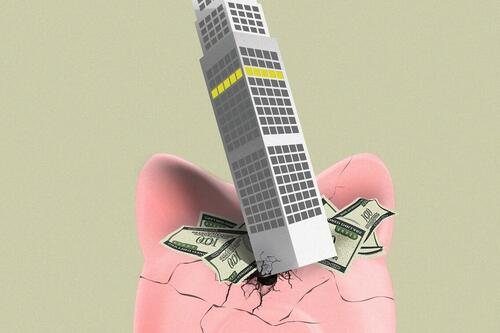 (Illustration by The Epoch Times, Shutterstock)
(Illustration by The Epoch Times, Shutterstock)
But, by the summer of 2023, the panicked withdrawals by frightened depositors largely subsided.
In February, however, New York Community Bank (NYCB) appeared to resurrect the crisis when it announced $2.4 billion in losses, fired its CEO, and faced credit downgrades from rating agencies Fitch and Moodys.
In what has become a familiar tale for U.S. regional banks, NYCB’s share price plummeted by 60 percent virtually overnight, erasing billions of dollars from its market value, and its depositors fled en masse.
“I think that there’s more to come,” Peter Earle, a securities analyst and senior research fellow at the American Institute for Economic Research, told The Epoch Times.
Underlying this year’s turbulence is the fact that many regional banks are sitting on large portfolios of distressed commercial real estate (CRE) loans. according to Mr. Earle. And many are attempting to cope through a process called “extend and pretend,” in which they grant insolvent borrowers more time to pay in hopes that things will get better.
“There is trouble out there, and most of it probably won’t be realized because of the ability to roll some of these loans forward and buy a few more years, and maybe things will recover by then,” he said.
“But all it does is it kicks the can down the road, and it basically means a more fragile financial system in the medium term.”
NYCB’s problem was an overwhelming exposure to New York landlords who were struggling to stay solvent. At the start of this year, the bank had on its books more than $18 billion in loans to multifamily, rent-controlled housing developments.
This situation was particularly concerning given that NYCB had been the safe-haven institution that rescued Signature Bank, another failing regional bank, in March 2023.
Much of what took down banks such as Signature Bank in last year’s banking crisis was an unmanageable level of deposits from high net worth and corporate clients that were too large to be insured by the Federal Deposit Insurance Corporation (FDIC).
 People walk by the First Republic Bank headquarters in San Francisco on March 13, 2023. (Justin Sullivan/Getty Images)
People walk by the First Republic Bank headquarters in San Francisco on March 13, 2023. (Justin Sullivan/Getty Images)
In Signature Bank’s case, about 90 percent of its deposits were uninsured, and depositors rushed to withdraw their money when the bank came under stress from losses in the cryptocurrency market.
Another source of stress for regional banks was their inability to cope with an aggressive series of interest rate hikes by the Federal Reserve to combat inflation. Many banks that held large bond portfolios yielding low fixed rates found that the value of these portfolios declined sharply, creating unrealized losses.
While these portfolios, often made up of U.S. Treasury securities, were considered safe from a credit perspective, they were subject to market risk, and their loss of value sparked concerns about the banks’ solvency in the event they had to be sold. As stock traders rushed to sell the shares of banks with large exposures to interest rate risk, customers became spooked and raced to withdraw their money.
Consequently, unrealized losses quickly became actual losses as banks were forced to sell bonds and loans at a loss in an increasingly futile attempt to make panicking depositors whole.
Rate Hikes Cease, Problems Remain
Today, while interest rates remain high, they are relatively stable. And yet concerns about the health of U.S. regional banks remain because of their large exposure through CRE, including office buildings, multifamily housing units, and retail spaces.
While CRE loans make up about 13 percent of the balance sheets of the biggest U.S. banks, they make up 44 percent of regional banks’ lending portfolios. CRE loans designated as nonperforming doubled as a percentage of U.S. banks’ portfolios from 0.4 percent in 2022 to 0.81 percent by the end of 2023.
In total, there are about 130 regional banks in the United States, with a little more than $3 trillion in assets. These banks, which each have between $10 billion and $100 billion in assets, are typically more exposed to the boom and bust of local markets but also to specific sectors within those markets where they have been able to operate profitably.
While other credit sectors, such as home mortgages, car loans, and corporate loans, are generally the domain of larger financial institutions, regional banks have found a profitable niche in lending to real estate investors. But in the past several years, commercial landlords have been taking hits from two directions.
Since the introduction of lockdowns and the rise of work-at-home culture during the COVID-19 pandemic, many corporations have viewed office rents as a cost ripe for cutting.
According to an April CRE report by Commercial Edge, the office vacancy rate across the United States was 18.2 percent as of March, an increase of 1.5 percent over the prior year.
“U.S. office vacancy rates have increased in recent years as companies embrace remote and hybrid work and re-examine their office footprints,” the report reads. “The increases are not concentrated in just one market or sector.”
Read more here...
-
Site: Mises InstituteThe watchword in higher education today is decolonization, which depends upon what Ludwig von Mises called racial polylogism. Mises understood that polylogism undermines the very foundations of scientific thought.
-
Site: Zero HedgeJPM Predicts Global AI Data Centers Will Consume 681 Olympic-Sized Pools Of Fresh Water DailyTyler Durden Thu, 05/23/2024 - 06:55
Wall Street banks are in a frenzy over "The Next AI Trade," piling into the 'Powering up America' investment themes, whether that's power grid companies, commodities, such as copper, gold, silver, and uranium, and artificial intelligence chipmakers, to accommodate the explosion of generative artificial intelligence data centers anticipated nationwide through the end of the decade and beyond.
JPMorgan's Asia Pacific Equity Research desk is the latest bank to jump on AI trade in a note titled "Deep Dive into Power, Cooling, Electric Grid and ESG implications."
Focusing on AI data center power consumption is too repetitive at this point, considering we've laid it all out on a silver platter for premium ZH subs in the "The Next AI Trade" and "The Next AI Trade Just Hit An All-Time High."
As well as this real-world example...
Even Blackstone Chief Executive Officer Steve Schwarzman and BlackRock Chairman and Chief Executive Larry Fink have jumped onto the power grid and AI investment theme as there is plenty of upside in the years ahead - unless AI demand doesn't shit the bed.
Back to JPM's note, authored by analyst William Yang and his team, which near the end explained, "While data centers have been scrutinized for heavy electricity use, the water intensive nature of their operations has been comparatively overlooked."
Citing data from Bluefield Research, Yang said total water consumption by global data centers (including on-site cooling and off-site power generation) has grown 6% annually from 2017 to 2022. He said by 2030, water consumption could jump to 450 million gallons per day. To put this in perspective, that's 681 Olympic-sized pools of fresh water that will be needed each day to cool global data centers in about 4.5 years.
"By 2027, the same authors suggest that global AI demand may be accountable for 4.2 – 6.6 billion cubic meters of water withdrawal, more than the total annual water withdrawal of half of the United Kingdom when taking account of the combined scope 1 and scope 2 operational water withdrawal," Yang pointed out.
He said the immense water demand from data centers in areas where water resources are scarce could spark "increased competition can strain water availability, even causing data center closures."
Here are the various ways to cool data centers via water:
Much of the water usage at data centers is "because millions of gallons of water each day are evaporated in cooling systems designed to off-load server heat," the analysts said.
We'd love to know where the critics of crypto miners are now, as AI data centers are set to consume massive amounts of power and water.
Are any NGOs or Greta going to protest AI data centers? We doubt.
-
Site: AsiaNews.itThe measure had 126 votes in favour and 109 against. It still needs the approval of the Senate to become state law. In the name of its Constitution, which protects the family, the Philippines is the only country not to have this institution in its legislation. The Catholic Church opposes the law that has been debated for years.
-
Site: Zero HedgeThe "Old Money" Secret To WealthTyler Durden Thu, 05/23/2024 - 06:30
Authored by James Rickards via DailyReckoning.com,
I believe that we’re heading for another liquidity crisis or financial crisis. That doesn’t mean it’ll happen tomorrow, but there are disturbing signs that it might not be too far off.
It doesn’t mean the world’s going to end. But investors who aren’t prepared could see large portions of their portfolios wiped out. It could take years to rebuild them, and many investors just don’t have the time to recoup those losses.
But how do you prepare? You might want to start by looking at how “old money” preserves its wealth. Today I want to explore that.
On a cool evening in the fall of 2012, I joined a private dinner in Rome with a small group of the world’s wealthiest investors.
We dined at Palazzo Colonna, a private palace that’s been owned by one family for 31 generations or 900 years. My dinner companions were mainly Europeans, some Asians and relatively few from the United States.
Amid marble, gold, paintings and palatial architecture, I mused on the meaning of old money compared with the new money crowd that congregated for cocktails near the Connecticut home in which I lived at the time.
Old Money vs. New Money
Old money has proved they know how to preserve wealth over centuries, while the jury is still out on new money busy buying yachts, jets and exotic vacations.
In the United States, the “old money” is generally about 150 years old with fortunes dating to the mid-19th century. Families in this category include the Vanderbilts, Rockefellers and Carnegies.
Some U.S. family fortunes are almost 200 years old. But most of the great wealth today isn’t old at all.
It comes from success in the past 30–50 years including Mark Zuckerberg, Jeff Bezos and Warren Buffett.
Yet in Rome I was ensconced in a 900-year-old fortune still intact. Here was a family fortune that had survived the Black Death, the Thirty Years’ War, the wars of Louis XIV, the Napoleonic Wars, both world wars, the Holocaust and the Cold War.
I knew the Colonna family weren’t unique; there were other families like them throughout Europe who kept a low profile. These families are only too happy to be overlooked by the Forbes 400. That type of wealth and longevity could not be due merely to good luck.
In 900 years, too many cards are turned from the deck for luck alone to be sufficient. There had to be a technique.
How Do They Do It?
I turned to a striking Italian brunette to my right and asked, “How does a family keep its wealth for so long? It defies the odds. There must be a secret.”
She smiled and said, “Of course. It’s easy.” You just invest in “the things that last.”
She added that the secret was, “a third, a third and a third.”
She paused, knowing I needed more, and continued, “You keep one third in land, one third in art and one third in gold.” Her advice followed the first rule of investing — diversification
She meant that wealth should be allocated one-third to land, one-third to gold and one-third to fine art (of course, some cash is needed for operating costs and some business investment is fine also).
But the “old money” shows that true wealth preservation comes from art, gold and land rather than stocks and bonds.
That doesn’t mean you shouldn’t own stocks and bonds. You should — I own them myself. But for long-term wealth preservation, you should also dedicate a portion of your portfolio to the assets that “old money” invests in.
Many of my readers know that I recommend they hold 10% of their investable assets in gold. I’ve also written about the value of fine art.
But there’s another old money asset you might want to consider: diamonds.
Diamonds Are Forever
The cliche from ad campaigns about diamonds being “forever” rings true. And crucially, it’s no longer just a haven asset for the super wealthy. Diamonds are a protection asset for investors with a resale value.
As strategist Yoni Jacobs writes, while investors focus their attention on gold and silver (for good reason) they miss important benefits of diamonds.
Consider these four reasons he lists as to why diamonds are a good investment:
1. Highest Value per Unit Weight. Diamonds are the most valuable items in the world. And they are the most portable. A small number of diamonds can make you wealthy. So this portability is essential to store wealth in case of emergency. Would you rather carry a few diamonds in a small bag or have to carry gold bars?
2. Diamonds Have Industrial Use. Having the highest hardness and heat conductivity of any bulk material, diamonds possess tremendous value for industrial use. In fact, 80% of mined diamonds are used industrially. Many investors think the value of diamonds is only based on demand and speculation. The reality is they serve an important industrial purpose.
3. Necessary for Global Growth. With infrastructure projects developing in many emerging countries, roads and highways must be built. Diamonds are used in many tools for stone cutting, highway building and other technologies. Demand for diamonds used in these ongoing projects will increase, along with higher prices.
4. Diamonds Have Emotional Value. The value that diamonds give as gifts is immeasurable. Whether it is for engagement rings, anniversary gifts or Valentine’s Day presents, diamonds will always be a valuable asset and in demand for emotional relationships around the world. Diamonds’ portability may be one of the most important things to consider as the world faces turmoil.
Priceless
In some future crisis, when gold has spiked to $10,000 per ounce, a similar weight of diamonds would take you into the tens of millions range!
And like land, gold or art, diamonds are nondigital. They cannot be wiped out by power outages, asset freezes or cyberbrigades. That’s crucial in a time of looming central bank digital currencies (CBDCs) or as I call them in the U.S. context, “Biden Bucks.”
The biggest difference between diamonds and gold is that the market for gold is much larger. Gold is a more liquid investment that’s easier to assign a price to. But that is changing as we speak.
In fact, this year, the world’s second regulator-approved, exchange-tradable diamond commodity will launch. It’s a sign of the growing demand for alternatives to cash as a store of wealth.
I’m not suggesting you just rush out to buy diamonds. There are many factors that contribute to a diamond’s value. You need to do your homework and maybe solicit professional assistance.
But you want to create a portfolio that can stand the test of time. Land, gold and fine art are among that.
Diamonds can be too.
-
Site: AsiaNews.itThe workers have spent thousands of euro on documents, but for months they have been waiting for a clearance to leave that has not arrived. In the crosshairs the consultancy company VFS Global, which was in charge of handling the administrative paperwork. Also involved are brokers and swindlers who exploit conditions of need to do business.
-
Site: Zero HedgeWalmart, Target Unleash Price-Cut Tsunami As Working-Poor Hit Brick-WallTyler Durden Thu, 05/23/2024 - 05:45
Some of the nation's largest retailers are rolling back prices in response to low-income consumers hitting a proverbial brick wall. These consumers have maxed out credit card debt and drained personal savings to dangerously low levels in the era of failed Bidenomics. This also comes after an underwhelming April retail sales report and several notes from Goldman warning about faltering low-income consumers:
- The Largest US Trading Desk Is "Getting Bearish On The US Consumer"
- Goldman Warns Consumers Are Cracking As Stagflation Threats Emerge
- Goldman's Commentary On Consumer Health Is An Ominous One
On Monday, Target announced, "It will lower everyday regular prices on approximately 5,000 frequently shopped items across its assortment. The retailer has just reduced prices on about 1,500 items, with thousands more price cuts planned to take effect over the course of the summer."
"Consumers will enjoy savings on everyday items such as milk, meat, bread, soda, fresh fruit and vegetables, snacks, yogurt, peanut butter, coffee, diapers, paper towels, pet food and more," the retailer said.
One can't help but ask what influence (if any) the Biden administration had in potentially pressuring Target to lower prices. Food inflation is crushing the working poor, as Democrats are begging the president to lower prices by executive fiat.
It wasn't just Target rolling back prices. Walmart, America's largest retailer, told analysts on an earnings call last week that it had begun reducing prices of grocery items.
John Furner, Walmart US' chief executive, said stores have already issued 7,000 rollbacks. This move is intended to boost food sales in the second half of the year and prevent low-income consumers from trading down to Dollar Generals.
Walmart noted that high-income consumers were trading down to the retailer, which helped drive sales in its grocery business last quarter.
Walmart's disclosure last week and Target's announcement this week of price reductions on everyday items, with core cuts in food items, are direct responses to consumer fatigue after three years of high inflation.
A recent FT-Michigan Ross poll showed persistent inflation has soured the mood of 71% of those surveyed. And maybe if the Biden administration's US Treasury, under Janet Yellen, wasn't spending like it was in a depression, $1 trillion every 100 days, then perhaps inflation could come back down to Earth.
Joe Feldman, an analyst at Telsey Advisory Group, told the FT that Target unleashed price cuts on popular items to keep pace with Walmart.
Or, in our view, the administration likely nudged the retailers to drop prices or risk being attacked by 'greedflation' buzzwords by Biden's social media team.
Feldman expects the price cuts by Walmart and Target will "likely expand to the rest of retail."
Consumers are likely to vote with their empty wallets this election season. Research firm NIQ said the effects of inflation have led to consumers spending a third more on consumer packaged goods than they did in 2019.
"I don't think we're going to see much in the way of wholesale declines in prices," Steve Zurek, vice president of pricing and promotion thought leadership at NIQ, said, adding that the outlook for prices was vastly different from two years ago: "It's not going to be everything going up."
Should consumers celebrate retailers lowering prices? Possibly, but don't expect substantial relief anytime soon.
In addition to major retailers, McDonald's recently considered returning $5 meal deals because low-income people are broke.
Great job, Bidenomics! The working poor has been crushed, set back a generation because of persistent inflation, produced by out-of-control spending by the federal government.
Goldman's trading desk this morning noted, "The theme of challenging 1Q consumer results has continued." This followed an underwhelming Target earnings report.
-
Site: Zero HedgeNvidia Explodes Higher After Blowing Away Estimates, Guiding Sharply Higher, Unveils 10:1 Stock SplitTyler Durden Thu, 05/23/2024 - 05:11
As discussed in our preview, Nvidia has been called the mother of all earnings -- the "single most important stock on the planet" according to Goldman - and for good reason: it accounts for 5% of the S&P. This morning, Mizuho’s desk analyst even said “they are the market in AI in many respects.”
So intense is the interest in today’s print that according to Bloomberg, some investors and onlookers I’ve heard from are making assessments of Jensen Huang’s body language when I spoke to him on Bloomberg Television in Las Vegas on Monday. They want any and all clues about whether this is going to go well. My conclusion from that conversation: Nvidia knows it needs to make sales beyond just cloud providers and is seeking fortune in enterprise and government markets (with help from Dell).
So with that preamble for what may be the most important earnings release this quarter, if not this year, here is what NVDA just reported for Q1:
- Revenue $26.04 billion (up from $7.19 billion y/y) and destroying estimates of $24.69 billion
- Data center revenue $22.6 billion vs. $4.28 billion y/y, smashing estimates of $21.13 billion. This is the all important one
- Professional Visualization revenue $427 million, +45% y/y, missing estimates of $479.1 million
- Automotive revenue $329 million, +11% y/y, beating estimates of $292.4 million
- Adjusted gross margin 78.9% vs. 66.8% y/y, blowing away estimates of 77%
- R&D expenses $2.72 billion, +45% y/y, in line with estimate $2.73 billion
- Adjusted operating expenses $2.50 billion, +43% y/y, in line with estimates of $2.51 billion
- Adjusted operating income $18.06 billion vs. $3.05 billion y/y, crushing estimates of $16.46 billion
- Free cash flow $14.94 billion vs. $2.64 billion y/y, estimate $12.29 billion
While the company blew away Q1 expectations, attention was on Q2 and specifically the revenue bogey where we said earlier $28BN was the magical number that would determine if the stock would plunge or soar. Well, not surprisingly, here is what NVDA just previewed for the second quarter:
- Revenue is expected to be $28.0 billion, plus or minus 2%.
Or right on the screws, and judging by the company's track record, that "plus or minus" will be a "plus", so realistically we are looking at almost $29 billion! Here is the only chart that matters.
Other guidance for Q2 and full year was the following:
- GAAP and non-GAAP gross margins are expected to be 74.8% and 75.5% (+/- 50 basis points). For the full year, gross margins are expected to be in the mid-70% range.
- GAAP and non-GAAP operating expenses are expected to be approximately $4.0 billion and $2.8 billion, respectively. Full-year operating expenses are expected to grow in the low-40% range.
- GAAP and non-GAAP other income and expense are expected to be an income of approximately $300 million, excluding gains and losses from non-affiliated investments.
- GAAP and non-GAAP tax rates are expected to be 17%, plus or minus 1%, excluding any discrete items.
Going back to the results, we will ignore the non-Data Center results which are now largely de minimus for the company, and focus on the big driver for NVDA results, where the company reported the following:
First-quarter revenue was a record $22.6 billion, up 23% from the previous quarter and up 427% from a year ago.
- Unveiled the NVIDIA Blackwell platform to fuel a new era of AI computing at trillion-parameter scale and the Blackwell-powered DGX SuperPOD™ for generative AI supercomputing.
- Announced NVIDIA Quantum and NVIDIA Spectrum™ X800 series switches for InfiniBand and Ethernet, respectively, optimized for trillion-parameter GPU computing and AI infrastructure.
- Launched NVIDIA AI Enterprise 5.0 with NVIDIA NIM inference microservices to speed enterprise app development.
- Announced TSMC and Synopsys are going into production with NVIDIA cuLitho to accelerate computational lithography, the semiconductor manufacturing industry’s most compute-intensive workload.
- Announced that nine new supercomputers worldwide are using Grace Hopper Superchips to ignite new era of AI supercomputing.
- Unveiled that Grace Hopper Superchips power the top three machines on the Green500 list of the world’s most energy-efficient supercomputers.
- Expanded collaborations with AWS, Google Cloud, Microsoft and Oracle to advance generative AI innovation.
- Worked with Johnson & Johnson MedTech to bring AI capabilities to support surgery.
If all that was not enough to send the stock soaring to all time highs, this shoudl seal the deal: the company also announced a 10 for 1 stock split, which guarantees that in a few weeks time, all retail investors will be piling into the suddenly "cheaper" stock.
And with all that, it's hardly a surprise that the stock is surging after hours, and is up about 4% trading in the mid $970s having earlier nearly jumped above $1,000 to a new all time high.
And while the company may not hit 4 digits after the close, it's just a matter of days if not hours before it does just that.
- Revenue $26.04 billion (up from $7.19 billion y/y) and destroying estimates of $24.69 billion
-
Site: Zero HedgeCIA Blocked Probe Into Hunter's Hollywood Tax 'Sugar Brother': WhistleblowerTyler Durden Thu, 05/23/2024 - 05:11
A trove of new whistleblower documents provided to House GOP investigators reveal, among other things, that the CIA prevented federal investigators from pursuing Hollywood lawyer Kevin Morris as a witness in their investigation of Hunter Biden.
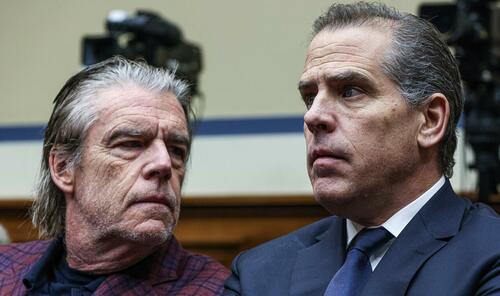 Photo: Valerie Plesch for The New York Times
Photo: Valerie Plesch for The New York Times
Morris, a Hollywood entertainment lawyer who has 'long supported' Hunter (and why?) has loaned the First Son more than $6.5 million, according to a January letter to the House oversight committee.
We've known about the CIA connection since March, when the Chairmen of the House Judiciary and Oversight Committees, Jim Jordan (R-OH) and James Comer (R-KY) said that a whistleblower has brought them information that 'seems to corroborate our concerns' that the CIA directly interfered with DOJ and IRS investigations of Hunter Biden.
According to a whistleblower, the CIA "intervened in the investigation of Hunter biden to prevent the Internal Revenue Service (IRS) and the Department of Justice (DOJ) from interviewing a witness," the letter, addressed to CIA Director William Burns, reads.
Specifically, the Committees were concerned at how "the DOJ deviated from its standard processes to afford preferential treatment to Hunter Biden," which they learned "after two brave whistleblowers testified to Congress" that the Justice Department had done just that.
"DOJ officials restricted what investigative steps the investigators could pursue, tipped off Hunter Biden’s attorneys about investigative steps, and even prevented investigators from conducting witness interviews. The whistleblowers’ testimony about the preferential treatment provided to Hunter Biden has been corroborated by testimony from other witnesses and documents the Committees have received."
And now we know who that witness is...
In a Wednesday statement, the House Ways and Means Committee wrote that whistleblower documents indicate "In 2021, Assistant U.S. District Attorney Leslie Wolf told investigators they could not pursue Hollywood lawyer Kevin Morris as a witness based on information she received from the CIA. Investigators were never provided the same information that AUSA Wolf received."
"From whistleblower-provided evidence, we know Hunter Biden and his business associates made millions from selling access to Joe Biden and the quote ‘brand’ that is Joe Biden around the world. We know President Biden’s denials of any knowledge or involvement are not true," reads the letter. "We know the Department of Justice tried to undermine, stonewall, and block the investigation into the Biden family, including President Biden."
Well, isn’t this cozy … Interesting how CIA “summoned” prosecutors and that they followed the directive to be hands off on Hunter Biden’s lawyer - looks like the agency doesn’t want anyone snooping around …
— Sara A. Carter (@SaraCarterDC) May 22, 2024
Informant? https://t.co/2vQz8MYfYpThe letter also details several lies Hunter told to Congress:
"Hunter Biden’s deposition is key to understanding the attempts to conceal how the family made millions from selling access. Yet, new documents provided by the whistleblowers show that Hunter Biden repeatedly lied to Congress in his February deposition to distance his involvement in what should be considered a clear scheme to enrich the Biden family."
- First, Hunter Biden lied about the recipient of a WhatsApp message sent with the apparent intention to threaten a business associate and demand payment.
- Second, Hunter Biden lied when he claimed he was not the corporate secretary of Rosemont Seneca Bohai and that the shell company he established with Devon Archer and its associated bank accounts were not under his control nor affiliated with him.
- Third, Hunter Biden lied during his deposition when he said he never helped individuals obtain U.S. visas.
Why would the CIA protect Morris?
Wait. Wait. So Hunter Biden’s sugar daddy—the weirdo who paid off Hunter’s tax bills and paid for his lawyers and apparently bankrolled Hunter’s documentary—is a CIA asset? Which means the CIA has been protecting Hunter the whole time? https://t.co/L92vu0kHZn
— Sean Davis (@seanmdav) May 22, 2024 -
Site: Crisis Magazine

Imagine receiving this message from a priest on a Sunday night: How would you respond to Father’s message? Before you answer, let me offer you some common but inadequate replies and explain why they are inadequate: So, what are some of the more serious, less easy-to-dismiss explanations for why these manifestly unhappy and resentful people are showing up for Mass on Sunday?
-
Site: Rorate CaeliThis is my destiny(Sermon for Pentecost Sunday given by Fr Augustin-Marie Aubry, Prior of the Fraternity of Saint Vincent Ferrer, to the pilgrims walking to Chartres) Come, O Holy Ghost, and send from heaven a ray of thy lightTo enlighten our souls about our mysterious destiny I have a question for all of you who are gathered before the altar, and for all of New Catholichttp://www.blogger.com/profile/04118576661605931910noreply@blogger.com
-
Site: Padre PeregrinoOne of the more common heresies over the last 50 years goes something like, "Jesus discovered His vocation at His baptism." Of course, that denies the Divinity of Christ. But a reader recently told me about the opposite heresy she came across. She saw that I recently said on social media that I do not [...]
-
Site: Crisis Magazine

Each U.S. election year since at least 2016, a piece of sage advice from C.S. Lewis’ celebrated 1942 epistolary novel The Screwtape Letters has resurfaced online, in which the book’s narrator, a Senior Devil in Hell named Screwtape, pens instructions to his equally demonic nephew, a Junior Tempter named Wormwood, upon the general subject of politics. It contains guidance about how to ensure the…
-
Site: Zero HedgeIsrael Has Killed Just 30-35% Of Hamas Fighters: US Intel OfficialsTyler Durden Thu, 05/23/2024 - 05:00
Only around 30 to 35 percent of Hamas fighters have been killed after more than seven months of operations by Israel in the Gaza Strip, US intelligence sources told Politico.
According to Politico, the majority of fighters who were members of the Palestinian movement prior to the 7 October attack in southern Israel are still alive, even as the reported death toll in Gaza has reached over 35,000 dead, mostly women and children.
 Via Reuters
Via Reuters
In addition, around 65 percent of Hamas' tunnel infrastructure remains intact, Politico's sources said, and thousands of new members are said to have been recruited to the group in recent months.
The report comes as Washington has become increasingly concerned about the viability of Israel's stated aim of destroying the Palestinian group.
On Monday, General Charles Brown, chair of the joint chiefs of staff, criticized Israel's strategy in Gaza, warning that the failure of Israeli forces to both secure captured territory and eliminate Hamas from northern Gaza was hampering its ability to achieve its military objectives.
The comments by Brown were a rare note of criticism from the US military, which has aided Israel in its war on Gaza by providing military equipment and assistance through intelligence sharing.
That cooperation has polarized President Joe Biden's Democratic political base in an election year.
While the Biden administration has thrown its full-fledged support behind Israel's war efforts, some officials in the administration are beginning to offer more criticism of the Israeli government, particularly on its war strategy and the overall aid situation for the Palestinians in Gaza.
Around 128 people taken captive by Hamas and other Palestinian groups remain in Gaza. Israel's government insists that military pressure is the best way to free them, and says it will not end its war in Gaza until it "eliminates" Hamas. Dozens of the captives are believed to be dead.
This reporting affirms questions I've raised to the State Department numerous times about the possibility of Hamas recruitment going up amid Israel's US-backed war on Gaza.
— Prem Thakker (@prem_thakker) May 22, 2024
Here's just over a week ago: https://t.co/mKOlfZT0S2 pic.twitter.com/Rjj3gpI1qnThere is growing discontent in Israel over the war's progress, with Israeli Prime Minister Benjamin Netanyahu accused of giving up on the Israeli captives.
-
Site: Zero HedgeThese Are The Countries Hosting The Most RefugeesTyler Durden Thu, 05/23/2024 - 04:15
According to estimates from the UN Refugee Agency (UNHCR), some 36.5 million people were living as refugees under the UNHCR or UNRWA mandates as of mid-2023.
As Statista's Anna Fleck shows in the chart below, the countries hosting the most refugees are predominantly neighbors to nations that have been experiencing conflict or war.
You will find more infographics at Statista
For example, Iran documented a jump in the number of refugees from 798,343 in 2021 to 3,425,091 in 2022, largely due to an increase in people leaving Afghanistan. According to humanitarian agency Concern Worldwide, this is also in part due to a change in the country’s system of classifying refugees and an effort to legitimize previously-undocumented refugees. Similarly, in Turkey, some 3.3 million refugees out of the country’s total 3.4 million are from neighboring Syria.
According to UNHCR data from mid-2023, the countries from which the most people have been forced to flee are Syria (6.5 million), Afghanistan (6.1 million), Ukraine (5.9 million), South Sudan (2.2 million).
It’s important to note here that actual numbers are likely even higher as this data only reflects the number of people identified by the UN as forcibly displaced.
-
Site: AsiaNews.itThe Iranian President and Foreign Minister Hossein Amir-Abdollahian who were killed in the helicopter crash represented the area most open to cooperation with Russia, especially in the delivery of weapons for the war in Ukraine. Khamenei will retain control, but conflicts with Moscow over control of Syria remain in the background.
-
Site: Mises InstituteContrary to popular belief, regulatory agencies do not improve the quality of our lives, nor do they provide safety or security. They need to be abolished, as free markets provide their own effective forms of regulation.
-
Site: Mises InstituteDo Austrian theories also apply to financial markets?


